“Metamorphosis of Portraiture: From Mimesis to ‘Terrible Beauty’” by Pablo Tsoi
This article is (also) inspired by John Berger (1926-2017), who’s always been influential in the domain now known as ‘visual culture’ ever since he published that little book, based on a BBC television series, so conveniently called Ways of Seeing (1972). But the inspiration this time is more specifically related to his newish book also quite conveniently titled Portraits (2017). Another inspiring event that prompted me to write about this topic is my recent visit to Art Basel Hong Kong 2022 in June, where Francis Bacon’s abstract-expressionist portraiture meets more contemporaneous appropriation portrait art.
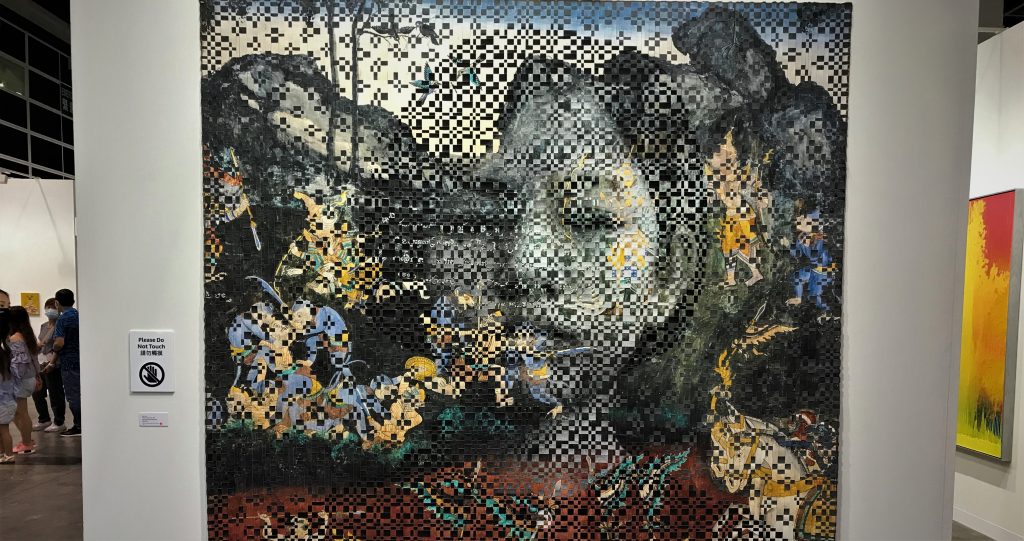
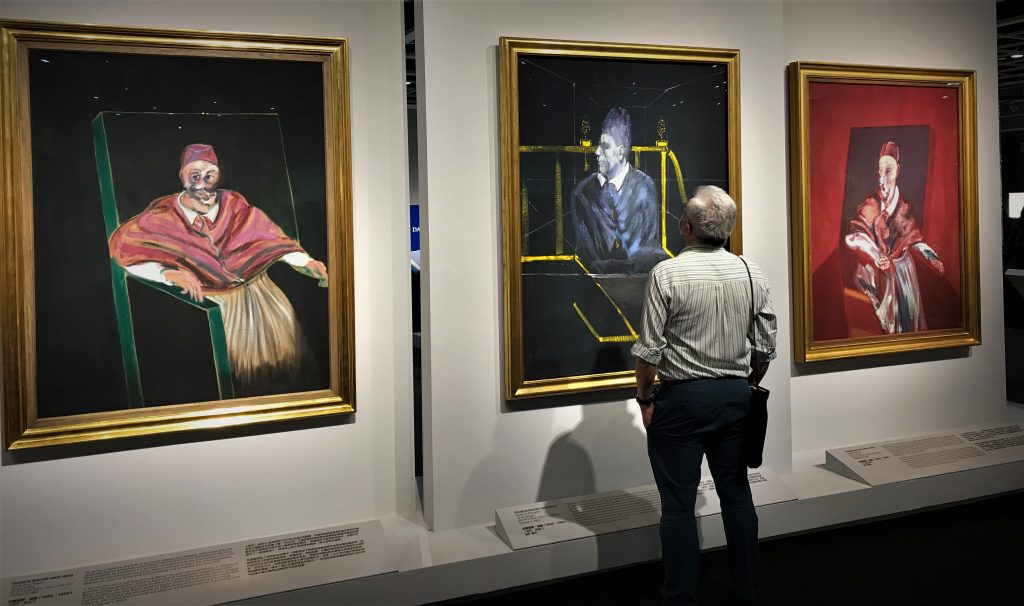
The subject matter of portraiture is constantly fascinating to me among others such as still life, landscape, or genre painting, not only because it requires and hence shows the most remarkably supreme techniques in painting, but also because the enactment of social functions of portraiture in different historical periods coincides with humans’ on-going relentless search for subjectivity. Speaking of such a somehow grandiose proposition, some critical theory which tends to turn serious philosophical eruditions into daily life cultural instances will be drawn upon (having to be in a fragmentary manner though) – this may include ideas proposed by Theodor Adorno, Michelle Foucault, and Jacques Lacan in their respective dealings with the Cartesian cogito.
The following discussion starts chronologically with addressing the first-ever representational portraits in Western art history, that is, the Fayum mummy portraits from ancient Egypt (then under the rule of the Roman Imperium). While comparing its unmistakable mimetic representationalism with those from the summit of this highest achievement in Western art in the later Renaissance and Baroque periods, the two contrasted modes of mentality underlying their respective pursuits of subjectivity will first be examined. Through exploring the transformation from an extreme mimesis1, as embodied in the two aforementioned periods, to its pendulum opposite as exemplified in Modern art and its aftermath, the thesis of the article will finally arrive at the point that portraiture after Modernism paradoxically returns to mimetic representationalism – but only superficially visually, and only in the name.
Fayum portraits
Many people believe that a piece of work of art, in its conventional sense, functions as no more than a means to provide a narrative, or storytelling, like a novel or a film. This is true particularly in relation to subject matters like mythology and religion, or in fact all the others apart from portraiture; of course, portraiture can also be construed as having certain kinds of narrative in it in a sense. But portraiture is first and foremost more about identity or the (re-)affirmation of subjectivity for the sitter. There had been a clear break in Western art history – a break which is called the ‘medieval’ lasted for about one thousand years (roughly from the fifth century to the fifteenth), a break almost literally suspending human’s pursuit of individual identity, and therefore a break during which there had not been the existence of portraiture in art at all. Any painting depicting a ‘human’ face is more to do with the subject matter of religion. These were the faces of the Saints – which were more popularly seen in the Byzantine icon painting. But before and after this the so-called ‘dark ages’, the craving for representing individual identity had been equally strong in portraiture – though in different senses.
The earliest portrait art in Western art that has survived are probably the Fayum portraits produced by the ancient Greek Egyptians from the first to the third century in the Fayum region in upper Egypt which was then a province of the Roman Empire. Thousands of these portraits have been excavated; such a vast number immediately implies that the portraits were not supposed to be made for art purpose. In fact, they may be regarded as people’s – of course, mainly of those from well-off families who can afford to commission a painting – ‘identity cards’ for their life in the underworld, that is, to be stuck to their own mummy coffins.
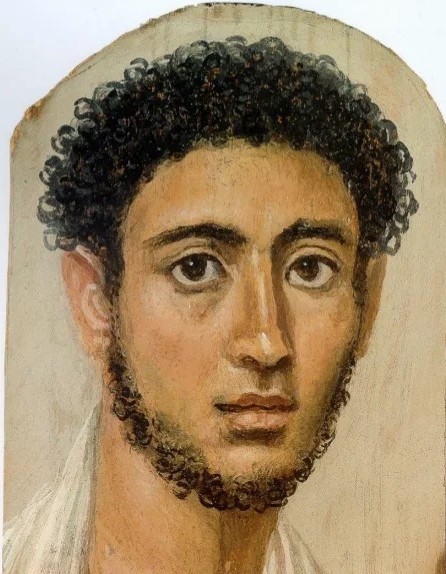
Due to such a huge demand, the level of artistry varies therefore across this portrait army. While most of them are not made sophisticatedly enough in terms of their rather coarse painting techniques in achieving plastic representationalism, the best ones are very refined indeed to the extent that they physically make us identify with them and ‘[they] touch us, as if they had been painted last month’ (Berger, 2017, p.7). I believe Berger’s point here is not only to address the familiar ambience we expect from a portrait, but also about the physical ways to depict such vivid faces or facial expressions that the Fayum painters adopt – which one may generally see in the techniques and treatments that a well-trained artist will exercise today to make a painterly oil or acrylic portrait.
For example, although encaustic2, the paint medium the Fayum painters used, is so unique and different from other kinds of medium that painters have used over the next two millennia, a decent degree of verisimilitude, which is accomplished by an accurate understanding of the anatomy of the human face, the logical treatment to depict light-and-dark shading, and the Impressionist way to present brushworks, is so familiar to us.
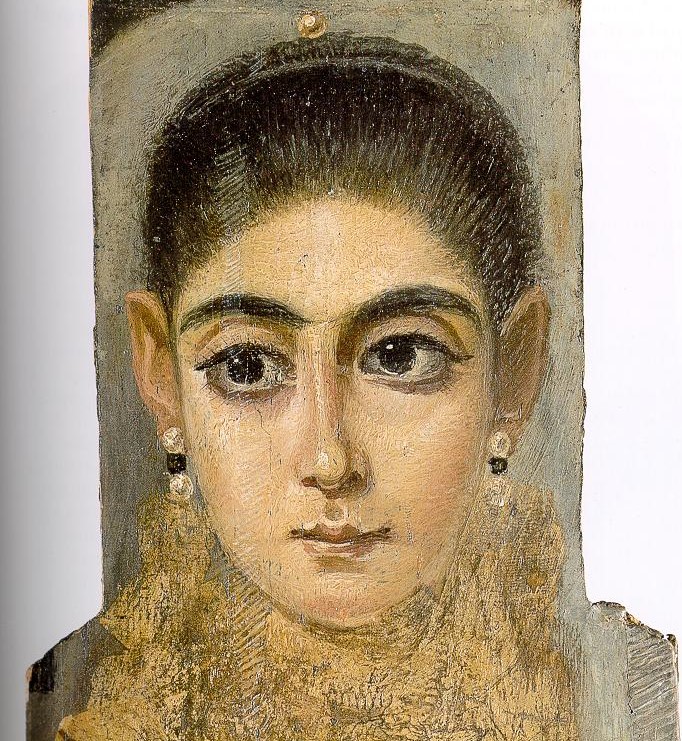
However, despite the noticeable pseudo-contemporaneousness more in terms of similar dealings with mimesis, there are distinctive elements making these portraits defamiliarized to us. One of the ‘awkward’ features among these portraits is the sitter’s gaze, which looks melancholy all the time, seeming to remind the beholder of the inevitably foreseeable death. You may say that the portrait for the sitter is the link in between life and death, having fully realized its practical function. The awareness of the gradual fading of their mortal identity seems to allow them to cherish every bit of their present identity, making them submitted into a very humble mental state. This is very different from the kind of portraiture we are used to seeing where the sitters are often unmistakably at ease and composed – if not always looking rather complacently handsome.
But despite such obvious and somehow oblivious humbleness, the beholder of the Fayum portrait, either the painter or the viewer of the portrait, will be very soon transferring their sense of viewing the sitter from watching him/her to being gazed by him/her; this is not the feeling out of watching later portraiture like Leonardo’s Mona Lisa or those painted by the most successful society portrait painters such as Jean-Auguste-Dominique Ingres (1780-1867) and John Singer Sargent (1856-1925). In other words, the subject-object position physically held by the sitter and the viewer is psychologically exchanged. That is why Berger proposes that such paintings are not to be construed as portraits:
[T]he Fayum painter was summoned not to make a portrait, as we have come to understand the term, but to register his client, a man or a woman, looking at him. It was the painter rather than the ‘model’ who submitted to being looked at. Each portrait he made began with this act of submission. We should consider these works not as portraits, but as paintings about the experience of being looked at by Aline, Flavian, Isarous, Claudine… (Berger, 2017, p.10).
Being looked at, or under gaze, is a feeling of being objectified and in this process, it is the supposed subject (i.e., the painter) who paradoxically ‘collaborates’ with the object (i.e., the sitter) to finish the former’s self-objectification. Thus, if the enactment of representation in portraiture, as we understand it today, is solely controlled by the producer of the artwork – who is therefore called ‘artist’, it was carried out with the Fayum portraiture by the very object of the representation, the supposed ‘model’. In addition, all Fayum portraits are presented in close proximity to the viewer who watches their eyes/looks almost in close-up. The lack of distance between the viewer and the sitter immediately obliterates the awareness of the subject-object duo position, getting the viewer-subject further objectified. This is important because it marks a huge difference from that kind of portraiture having prevailed in the West a thousand years later – until the so-called ‘Modernist’ movements.
Portraiture since the Renaissance seldom depicts an intense gaze from the sitter that tends to mesmerize or even manipulate the viewer. Rather, the sitter no matter in Renaissance or Mannerism or Baroque or Neo-classicism art is always passively objectified from the viewer in order for the latter to enjoy, or ‘consume’ – to put it a little bit more fashionably politically, the beauty, the sensuality, or the luxury shaped by respective kinds of discourse prevailing in different socio-cultural contexts. For the Fayum sitters, in short, their portraits are for them to reassure their existence as to articulate a firm identify as the subject, at least once, of the mortal world.
The Renaissance
Although it is impossible to generalize features across portraiture made in four hundred years roughly from the Renaissance to the pre-modern impressionism, some key characteristics in relation to how to deploy the sitter’s look in most of the portraits produced during this period can be unanimously identified. In theory, the subject-matter of portraiture did not exist during the Renaissance in which art was still mostly devoted to presenting religious and mythological topics. But we do find a number of very well-known portrait paintings from both Northern and Southern Renaissance only portraying mundane people, such as those to be discussed here, including Jan van Eyck’s double portrait Arnolfini Wedding (1434), Hans Holbein’s double portrait The Ambassadors (1533), Leonardo’s Mona Lisa (c. 1502), Raphael’s La Fornarina (1518), and Titian’s Venus of Urbino (1534).
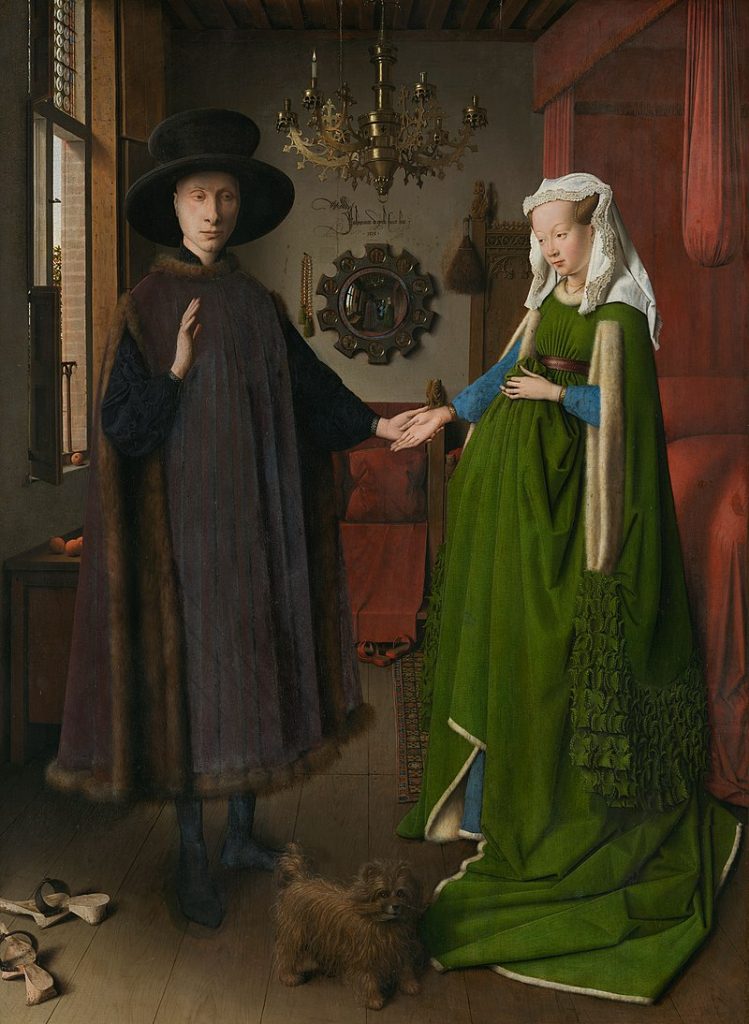
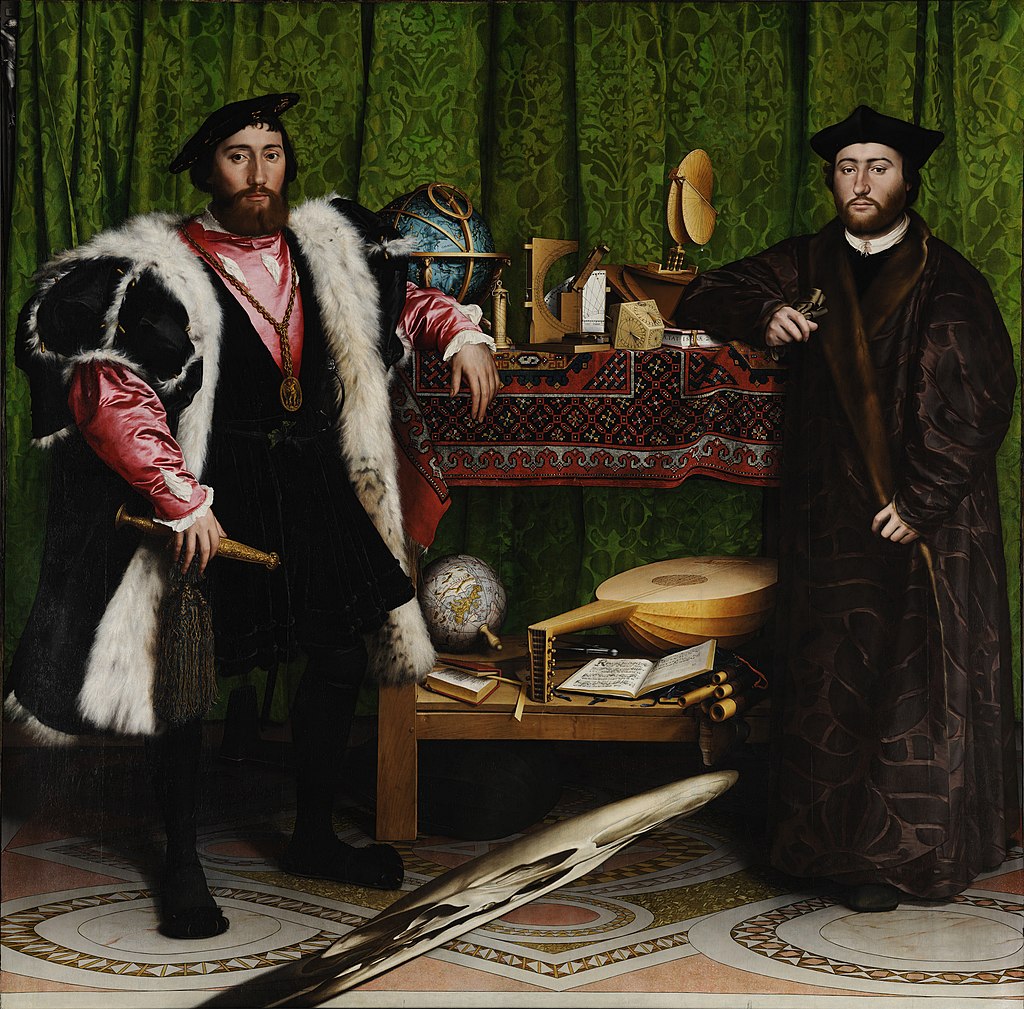
All these paintings depict only secular people (despite the name of the Titian one) instead of Christian Saints or Greek and Roman mythological figures which were then predominantly constituting the main subject matters. These portraits are eager to present the glory of humans – after the ‘dark’ and long Medieval in which everything in art is reserved for spreading doctrines of the holy Church – in various social domains including high-brow culture such as art and science as well as secular interests like sensual beauty and sexuality. The articulation of such strong representational meanings lies in the more and more sophisticated oil painting techniques developed from early through high to late Renaissance in terms of an ever-mature plastic representationalism based on the superb modelling skills and the mastery of the perspective principles to achieve an ever-growing illusionistic three-dimensional space and images.
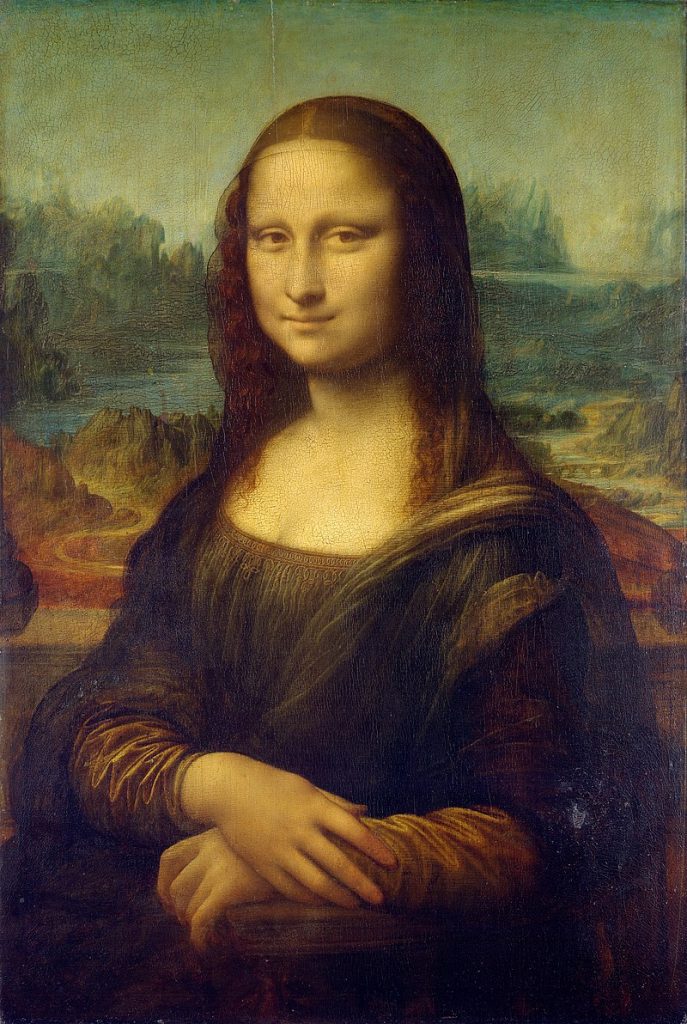

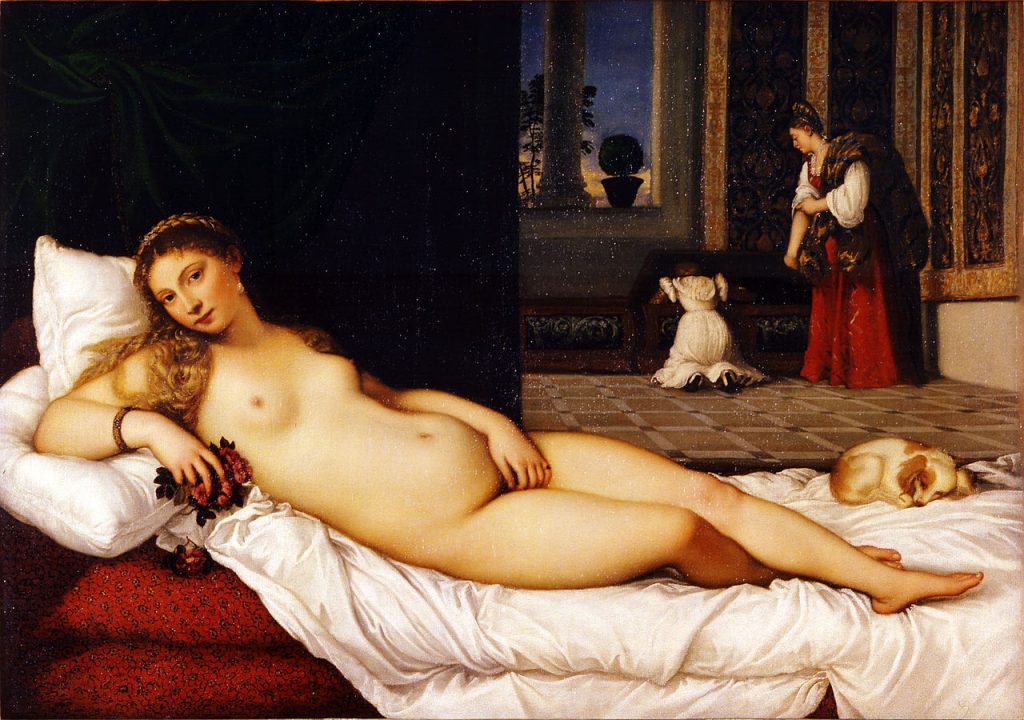
Claimed by Giorgio Vasari (1511-1574) as the ‘inventor’ of oil painting which is the ‘most beautiful invention and a great convenience to the art of Painting’ (Vasari, 1960, p.226), Jan van Eyck can be seen as setting the ‘standard’ for modern concept of portraiture. In his Arnolfini Wedding, the supposed newly wedded husband and wife are looking at us (or, their visitors – as seemingly ‘disclosed’ through the latter’s reflection in a round convex mirror hung in the rear wall). Their looks are that of the hosts’ and hence of the objects from the subjective perception from the viewer. What the viewer mentally perceives, in association with his/her understanding of the other ubiquitous symbolic objects referring to the concern over sexuality in a marriage, can be construed as a patriarchal marriage which is morally justified by the Christian Passion embodied through the ten small pictures garnishing that convex mirror at the back showing the ten scenes of Christ’s Passion – from the Garden of Gethsemane to the Resurrection.
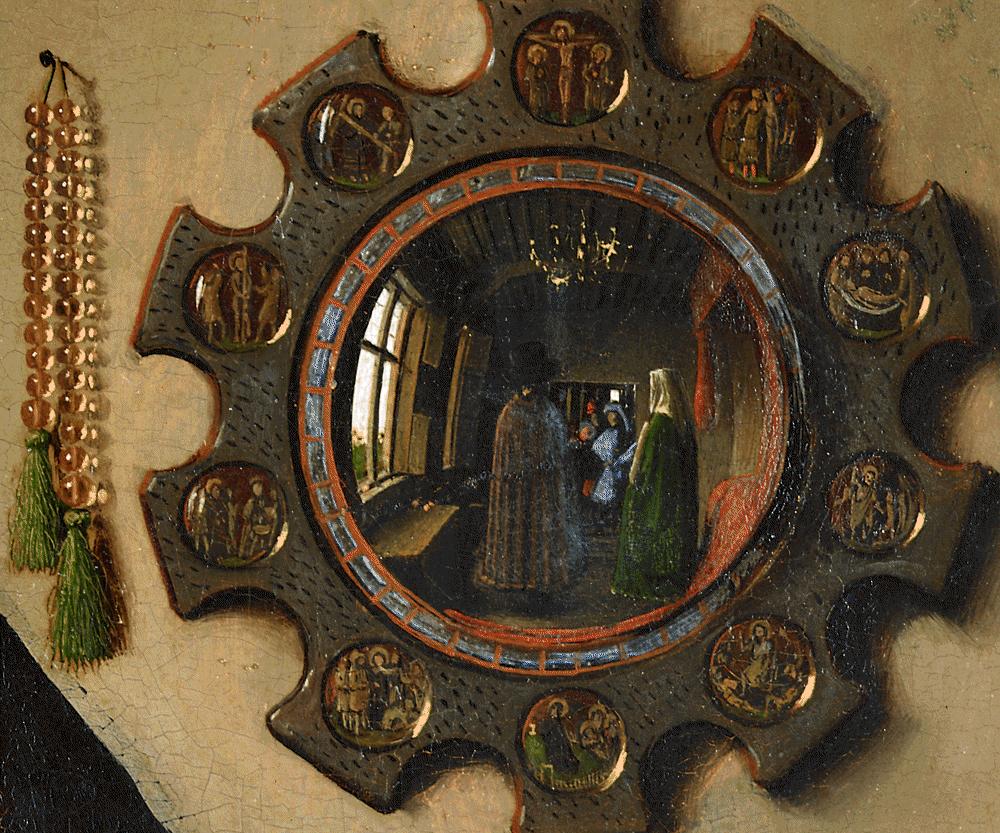
With the purposeful arrangement and highly mimetic depiction of body language as well as allusive elements (e.g., symbolic objects), the following ideological meaning reflecting the stereotype of a patriarchal marriage can be seen:
In van Eyck’s painting the man is given the controlling gesture: he calls forth his wife’s fecundity. In some ways she seems to be a humble and responsive handmaiden to her husband. For example, on the rear wall hangs a set of crystal prayer-beads. Such beads were a typical engagement present from a prospective husband to his desired wife, and were meant to symbolize the requirement that women remain quiet and devout… From the misogynist male point of view, a woman’s role was that of prayer and the supervision of housework in silence. As the daughter of Eve, she was ever capable of tempting men into eating of the fruit of Paradise, which here is alluded to by the oranges – ‘Adam’s apples’ – on the window-sill and chest… The idea of the female as temptress was a pervasive middle-class or upper middle-class stereotype of the period. (Harbison, 1991, pp.36-7)
Because of the highly mimetic representation of the reality, including human figures, allegorical motifs, and the outer physical environment, the viewer indubitably receives the representational meanings conveyed in the Arnolfini Double Portrait, which advocate a strong patriarchal superiority in marital relationship.
While van Eyck’s double portrait promulgates patriarchal dominance in social life, Hans Holbein’s The Ambassadors seems to show doubts about or even scorn for the pride of humans being so proud of their achievements in arts and science. The painter urges the viewer to become aware of the momentary mortal existence of human vanity – represented by the ubiquitous allegorical objects like the lute, the globe, and the books (signifying arts) and the astronomical and astrological equipment items (science) which assert an ideology to glorify human civilisations – by contrasting it to the distorted and hidden skull (through anamorphism).
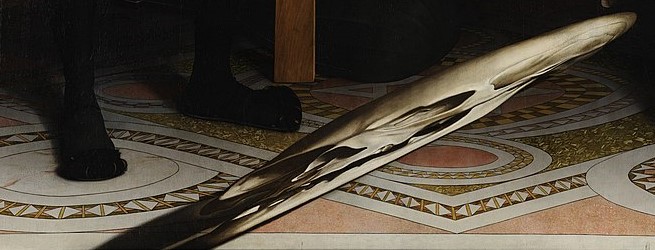
The appearance of the French ambassadors, as such, discloses a certain submissive tendency to be supplementary to those grandly human accomplishments, as if they ‘have been “arranged” around these objects’ seemingly leaving the focal point of the painting to the ‘dead’ objects (or ‘still life’) at the centre (Moyle, 2021, p.209). Such a composition as well as the assertively minute details of the objects supersede the supposed main subject matter of the painting as a double portrait. Like van Eyck’s Arnolfini Wedding where the original nature of mimesis in portraiture gives way to advocating particular kinds of social ideology, Holbein’s portrait art is also ideologically inclined, being eager to assert social significances as well as philosophical concerns instead of merely addressing the individuality held by the models.
As mentioned, personal portraiture is not common during the Renaissance, but each of those acclaimed Renaissance painters, such as Leonardo, Raphael, and Titian, left us certain strictly defined portraits characterized by pursuits of humanity in different pre-dominant ideological contexts. If both Raphael’s La Fornarina and Titian’s Venus of Urbino embody men’s sexual desire towards being the master in the gender hierarchy, Leonardo’s Mona Lisa is seen to emphasize presenting an intellectual and self-contained female personality. Generally speaking, Italian Renaissance, both the Venetian and the Florentine, rather tends to address issues relating to humanism – even when dealing with religious or mythological subject matters.
For example, in Sandro Botticelli’s (1445-1510) huge tempera painting Primavera (late 1470s or early 1480s), either the events taking place or the mythological figures being portrayed are allegorizing eternal secular humanistic concerns such as tangible beauty, sexuality, and even a touch of hedonism.
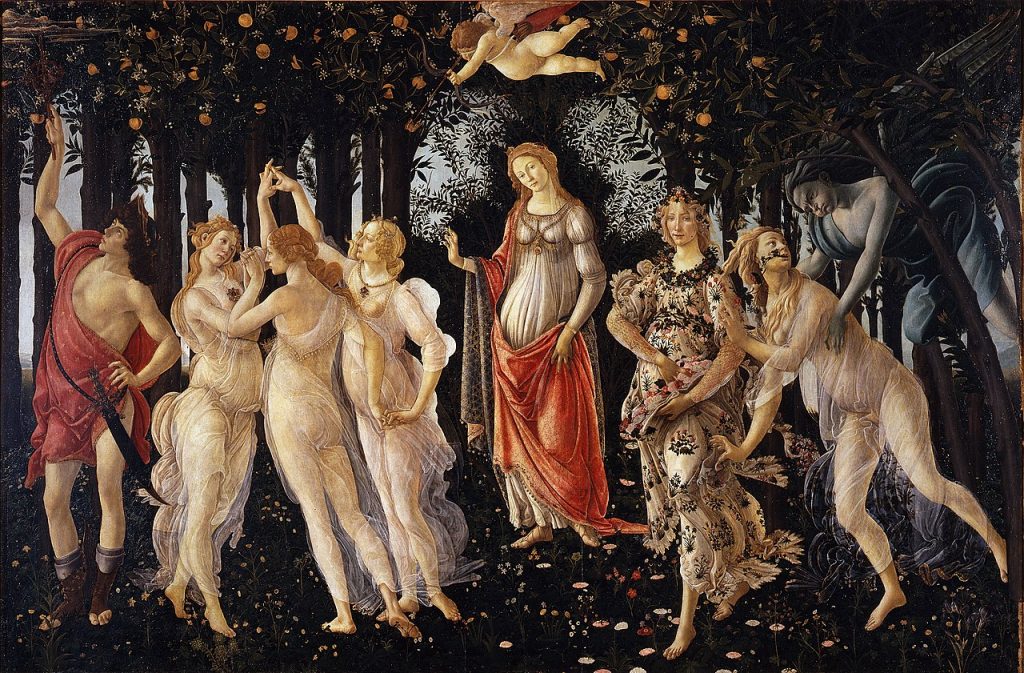
We may say both Raphael’s La Fornarina and Titian’s Venus of Urbino are in line with such spontaneous human desires – or, precisely, men’s desires. First, both paintings portray very erotic nudes with extremely sexy bodies and arousing postures. Second, both two women – the Titian one in particular – are endowed with unmistakably seductive looks directly at the viewer who, as always being the owners and the sole connoisseurs of these sensual portraits, is doubtlessly a man. In other words, the social function of these portraits serves to satisfy what we nowadays call ‘male gaze’, and hence such portraiture reveals ‘gender stereotypes’ which justify women’s submissiveness to patriarchal domination.
As opposed to such gender stereotypes in Renaissance portraiture, Leonardo’s portraits of female sitters share a different personal ambiance which is characterised by serenity, dignity, and intelligence. Take his Portrait of Ginevra de’ Benci (1478-1480) and Portrait of Cecilia Gallerani (1489-1490) as examples. Although neither of the two ladies gives direct gaze at the viewer, they both captivate us with their allegedly thoughtful looks: the former looking at an unknown space in front of her being apparently immersed into a deep meditation whereas the latter being attracted to glancing at something alluring nearby on her left-hand side. These sitters are all of conspicuous beauty while without lapsing into any vulgar sensuality.
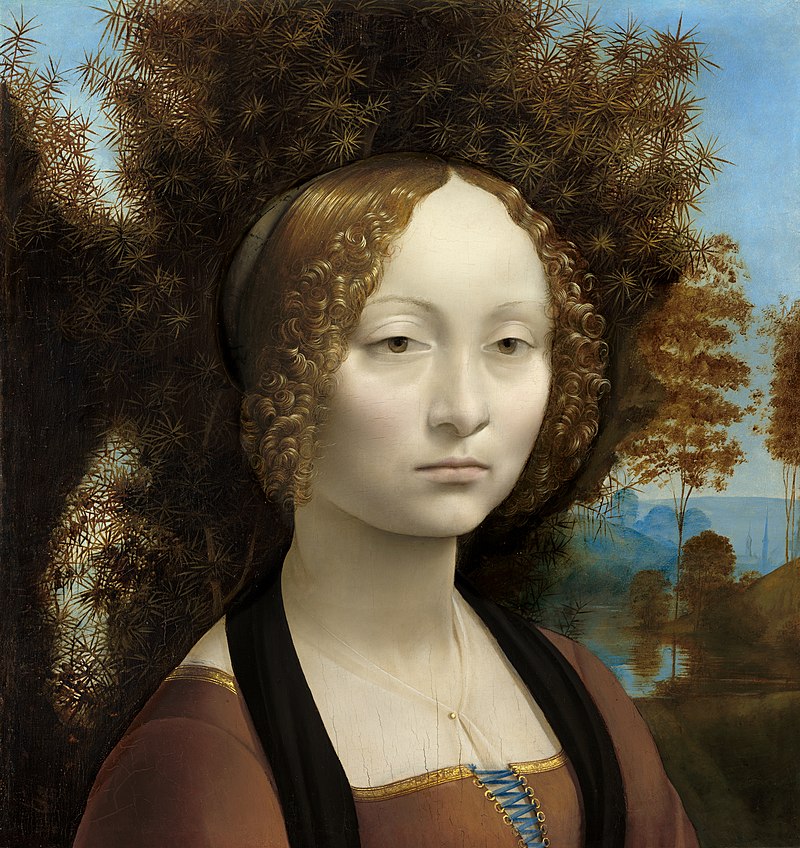
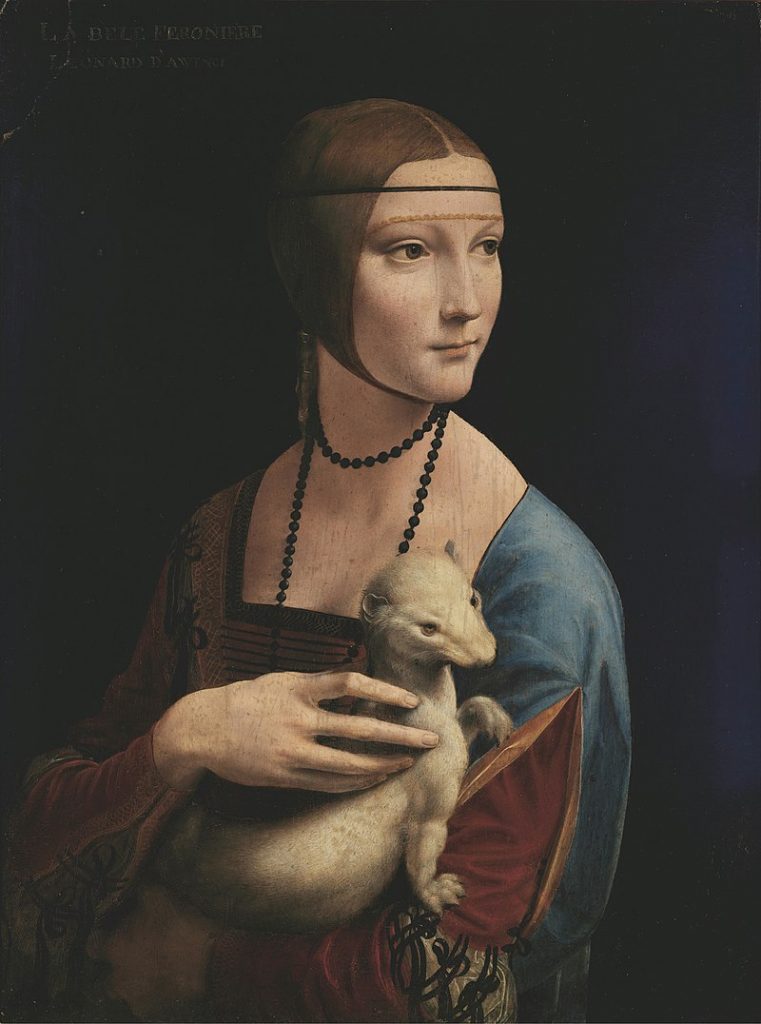
Similarly, having her gaze at us somehow inadvertently but very confidently, Mona Lisa’s beauty does not tend to be sensually enticing as her divine smile (also disclosing a touch of cunningness) shows clearly that she is not going to be objectified by the viewer. Giorgio Vasari (1511-1574), the sixteenth century and arguably the first art critic-historian who provided commentary on Leonardo as well as Mona Lisa, shares his observation on this unique kind of realism of the portrait:
Anyone wishing to see the degree to which art can imitate Nature can easily understand this from [Mona Lisa’s] head, for here Leonardo reproduced all the details that can be painted with subtlety…And in this portrait by Leonardo, there is a smile so pleasing that it seems more divine than human, and it was considered a wondrous thing that it was as lively as the smile of the living original. (Vasari, 1550/1998, p.294)
Having achieved these breakthroughs, Leonardo separates himself markedly from his fellow-Renaissance artists. Like his earlier mural The Last Supper (1495-1498) where Leonardo exhibits his technological advancements (such as the use of oil instead of the normal fresco for a mural painting – leading eventually to a technical disaster though) as well as ideological interrogations (for example the unconventional interpretation of this religious scene), Mona Lisa as a portrait for the mundane world does not address earthly concerns like those permeating the Raphael and Titian paintings as discussed above. Rather, it makes portraiture sublimated into a cultural text which registers ideological changes alongside other cultural transformations in different socio-cultural domains.
Indeed, the portrait’s pursuit of humanist aestheticism resonates with the crave for contemporaneousness among other brilliant Florentine humanists such as the poet-politician Dante Alighieri (1265-1321). As the renowned Leonardo scholar Martin Kemp observes, the naturalistic aestheticism of the portrait also reflects its poetic and literary aura echoing, for example, that of the Italian vernacular literature initiated by Dante:
Leonardo’s way of thinking about how to portray a ‘beloved lady’ was infused with Dantesque motifs. The overall presentation – the lady is present before our eyes, yet for all her apparent reaction to us, she remains elusive – is profoundly consistent with the characterization of idealized devotion in Italian sonnets. Renaissance poets’ tormented love was not destined to be requited. (Kemp, 2018, p.79)
Leonardo, the notable developer of the oil painting technique known as sfumato, the audacious experimentalist who endeavours to exercise his imaginative painting innovations even at the cost of ruining his artistic career (as in the case of the Last Supper), and the prolific and inexhaustible creator, can be seen as first and foremost an intellectual who constantly challenges an ideological absolutism which always tends to be innately corrupting at the end.
From Baroque to Post-impressionism
Unlike the Renaissance portraiture which generally tends to articulate human endeavours in various social domains, in the succeeding Baroque period portrait art more often inclines towards exercising practicality like endorsing socio-economic authorities on the one hand and satisfying the painters’ personal financial need the other.
For example, Diego Velasquez (1599-1660) in Spain – and successively Francisco Goya (1746-1828) too in the next century – devotes himself to the Spanish royal court as portrait painter for the royal members, and certainly the kings.
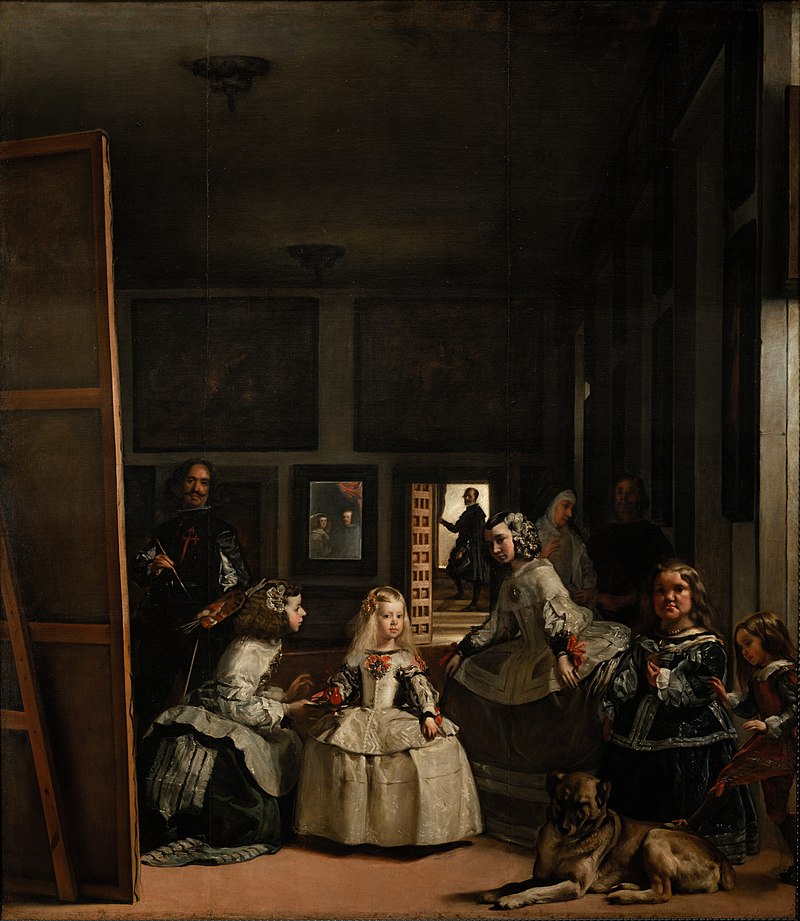
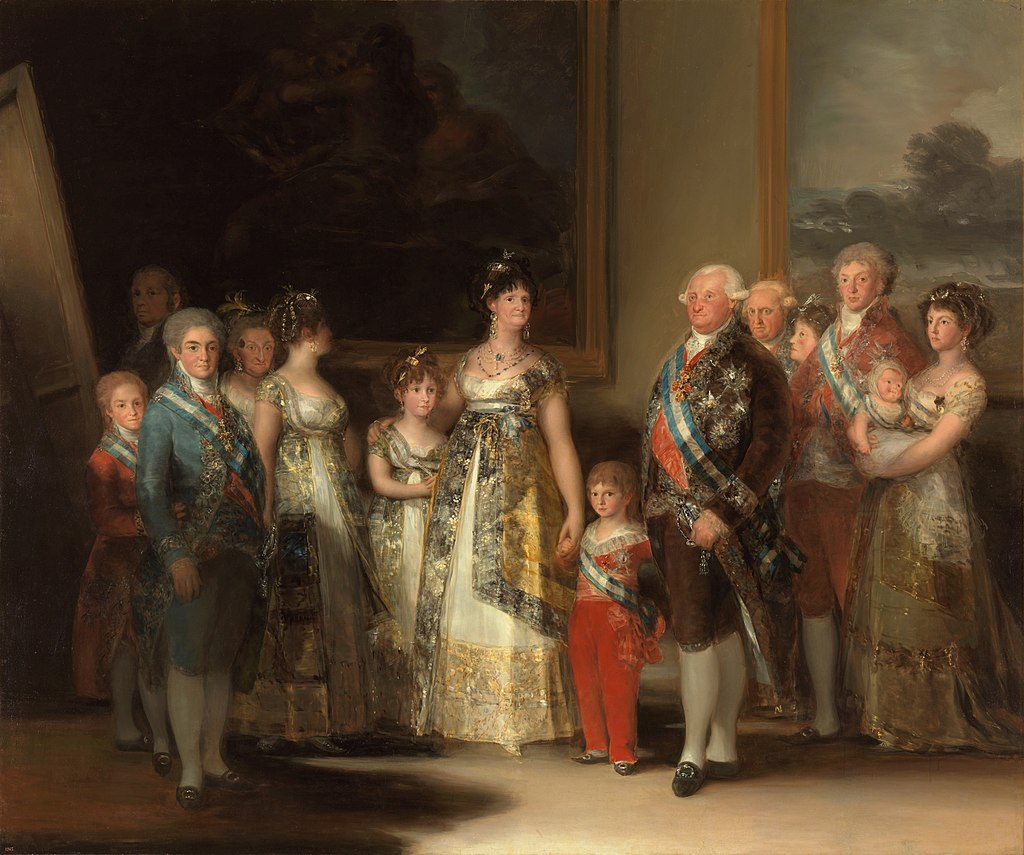
While the Flemish Peter Paul Rubens (1577-1640) leaves us quite a few pieces of family portraits, the Dutch artist Rembrandt van Rijn (1606-1669), famous for his own self-portraits, undertakes his career basically as a commissioning portrait painter for the wealthy merchants.
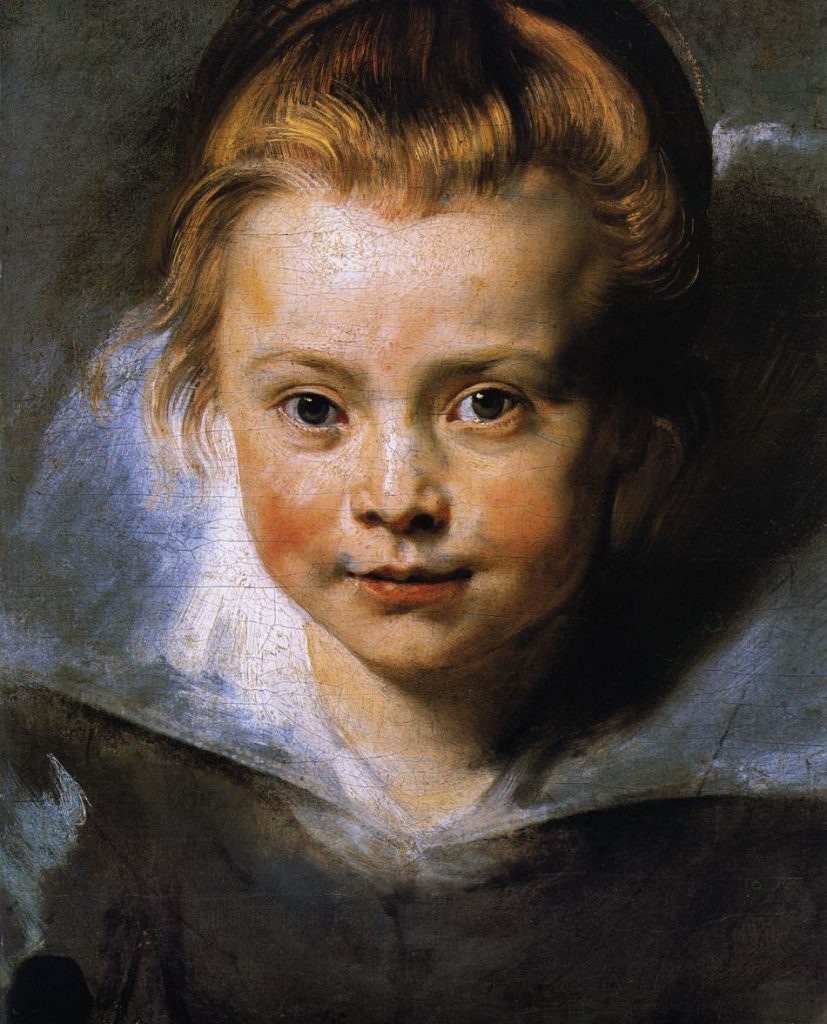
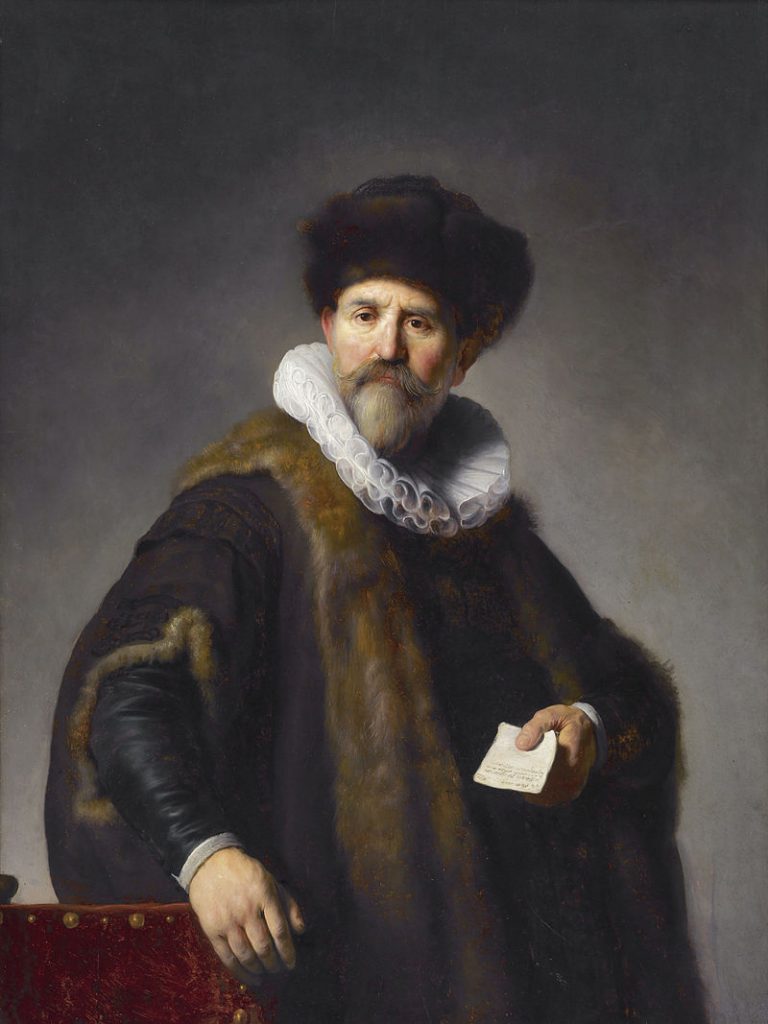
Later on for the French Romantics, Jacques-Louis David (1748-1825) uses portraits to glorify the revolutionaries of the French Revolution such as the notoriously paranoid Jean-Paul Marat, while soon paradoxically celebrating the enthronement of Napoleon Bonaparte.
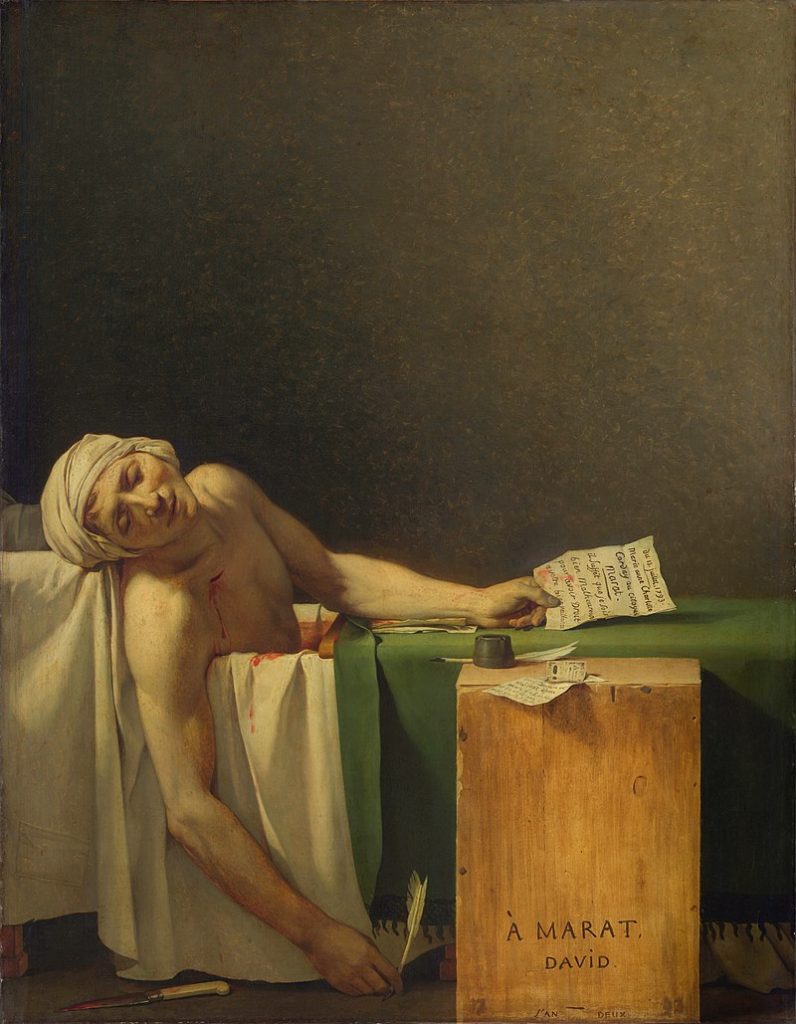
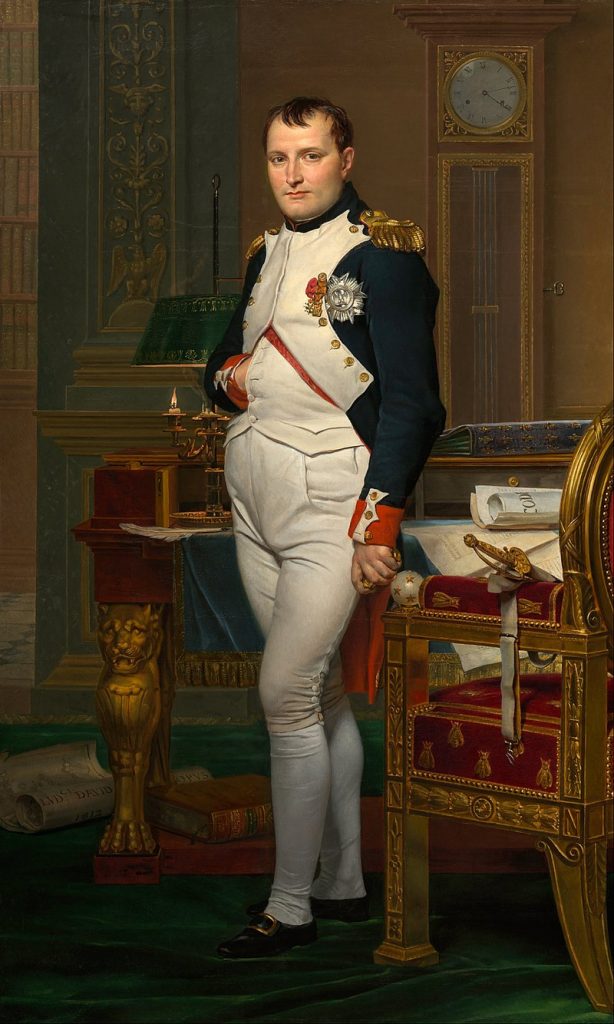
Unlike his contemporary and artist rival Eugène Delacroix (1798-1863) whose art was mostly dedicated to commemorating legendary historical events with his unpopular portraiture depicting only his close friends and fellow-Romantic artists like Frédéric Chopin and George Sand, Jean-Auguste-Dominique Ingres (1780-1867), not having turned out to be very successful in history painting, would soon be regarded as the first and foremost portrait painter by profession.
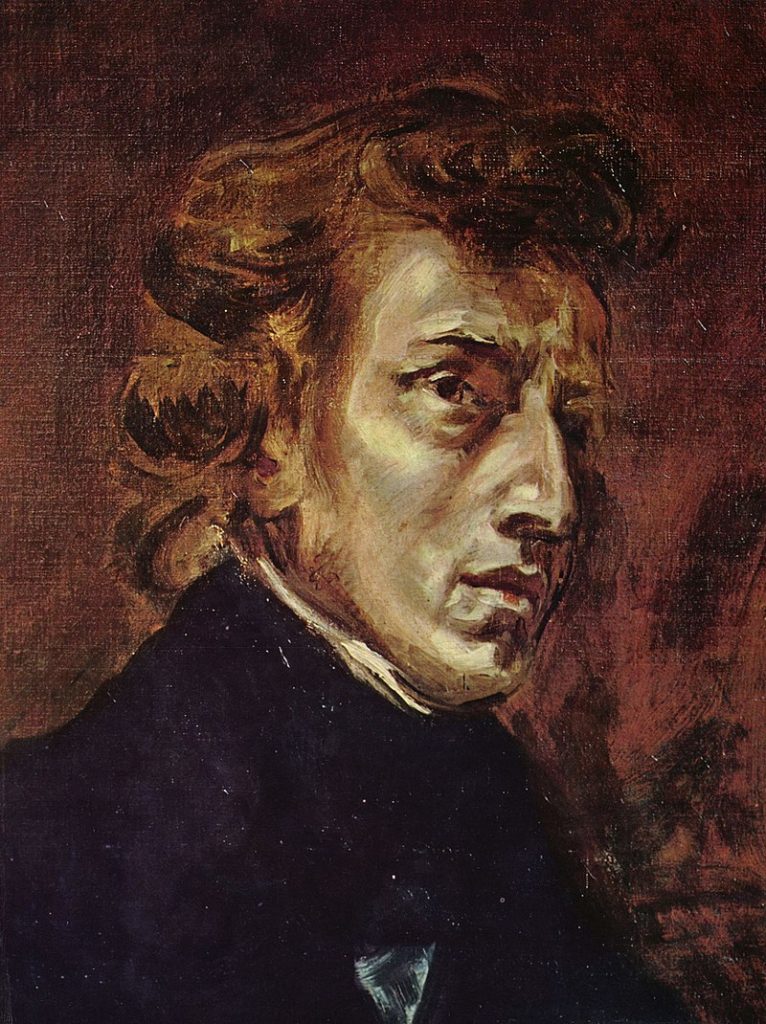
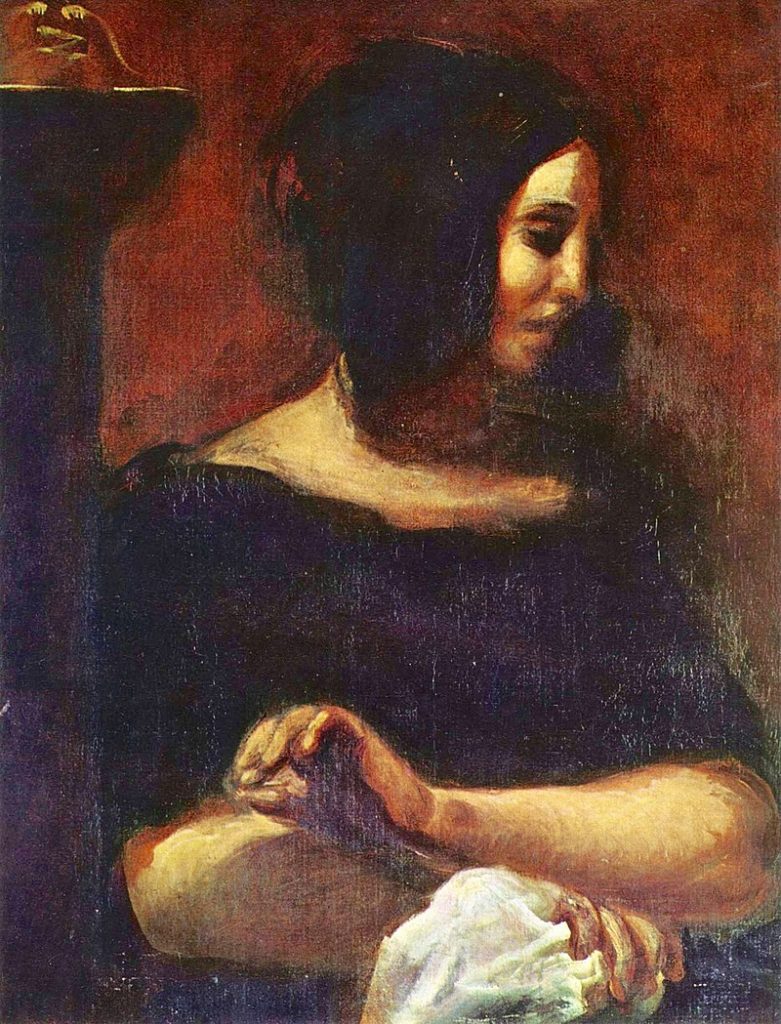
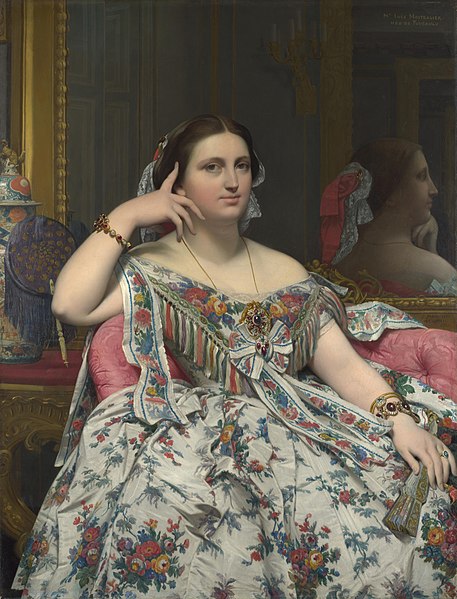
Madame Moitessier. 1856
With his extraordinary painting techniques (which won him the Prix de Rome entitling him to four years of residence at the Académie de France in Rome), Ingres’s portraiture being his trade reaches the summit of portrait art in terms of an unrivalled mastery of plastic representation and mimesis which allows the sitter to be portrayed in a highly realistic and illusionistic manner – like a modern photograph. In short, portrait art during the Baroque and Romantic periods mainly serves practical socio-economic purposes being either the tool to enact political propaganda or that of profit-making.
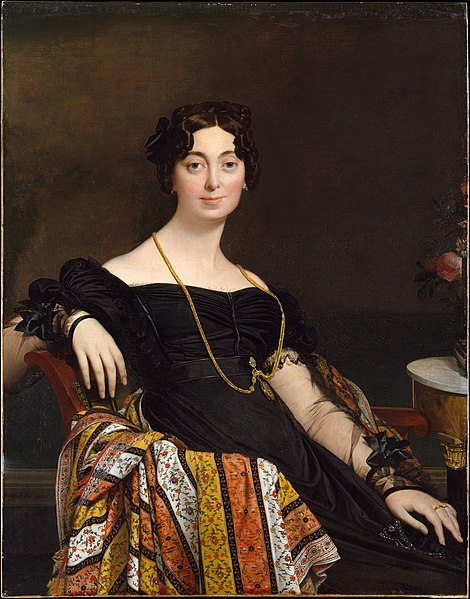
After the Romantics and the Neo-classicists came the Realists and the Impressionists who, unlike the previous generations doing portraiture merely to represent an immediate physical reality, try to challenge the existing pre-dominant corrupting social ideologies. Édouard Manet (1832-1883), standing in-between a Realist and an Impressionist, performs a role of moral education in some of his portraits or group portraits. Whereas his Le Déjeuner sur l’herbe (The Luncheon on the Grass) (1863) had already embarked on a mission to impudently satirize a sexist ideological convention in classical art of which Raphael’s The Judgement of Paris – through the ‘reproduced’ engraving version (ca. 1510-20) by Marcantonio Raimondi – is the very target background text, his ‘feminist’ parodic foreground texts culminated in Olympia (1863), which was first exhibited at the 1865 Paris Salon.
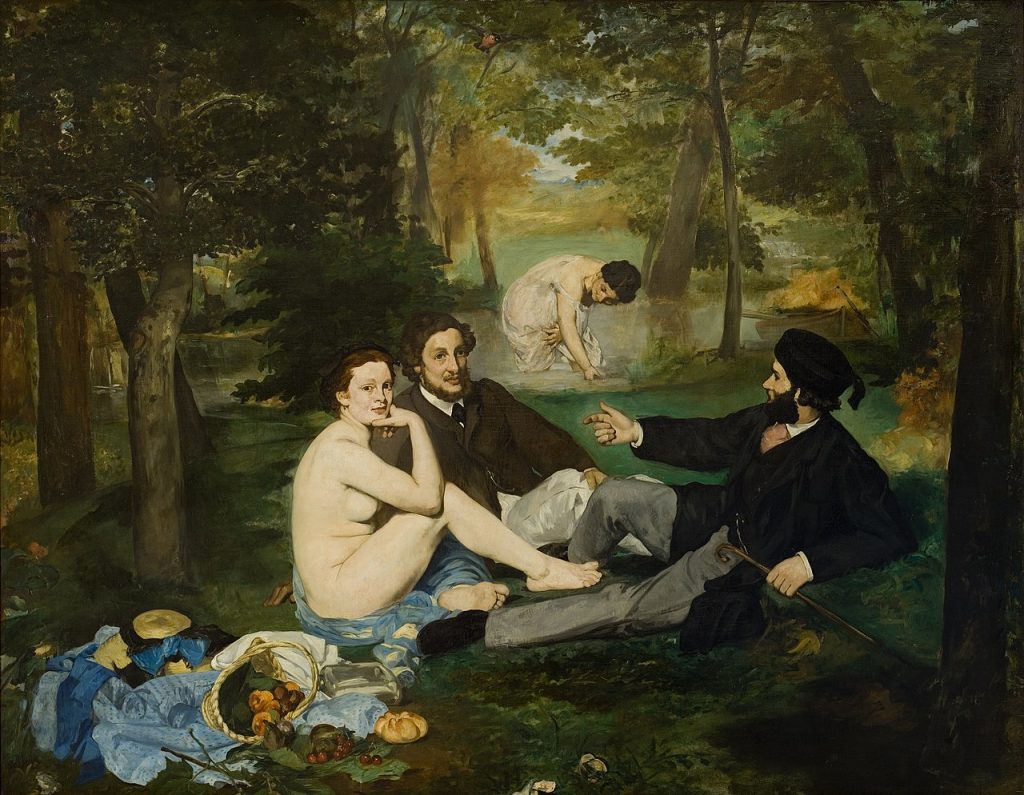
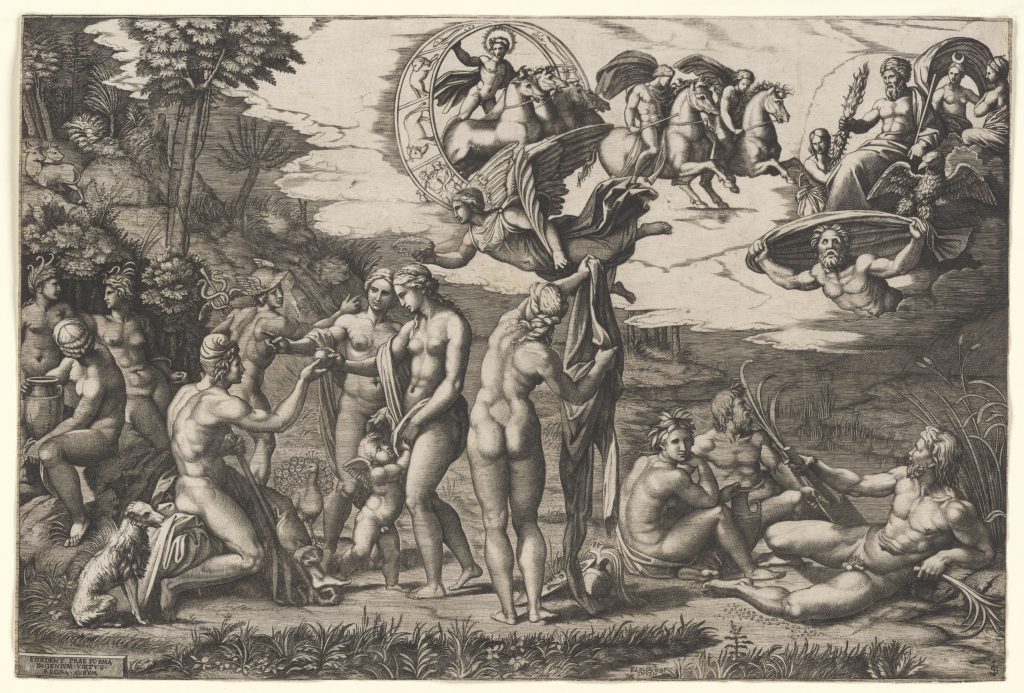
Parodying Titian’s notoriously sexist Venus of Urbino, Manet’s Olympia is a direct confrontation against a patriarchal male-centred ideology. In fact, Manet could be deemed to be quite a modern parodist whose reworking of the classic masterpieces differs markedly from those ‘pastiches’ done by artists of the previous centuries, such as Titian himself. While also seemingly imitating the famous Sleeping Venus (c. 1510) by Giorgione (1477-78 or 1473-74), his senior Venetian contemporary, Titian’s Venus of Urbino is a typical pastiche of the Giorgione one in terms of both alluding to the same iconographic image of Venus as well as the almost identical composition.
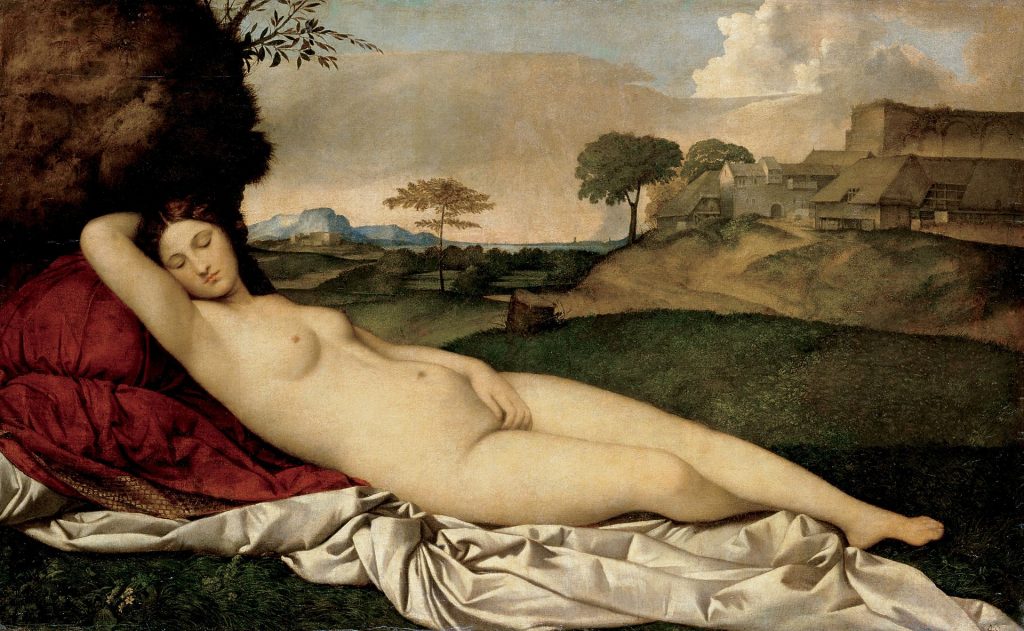
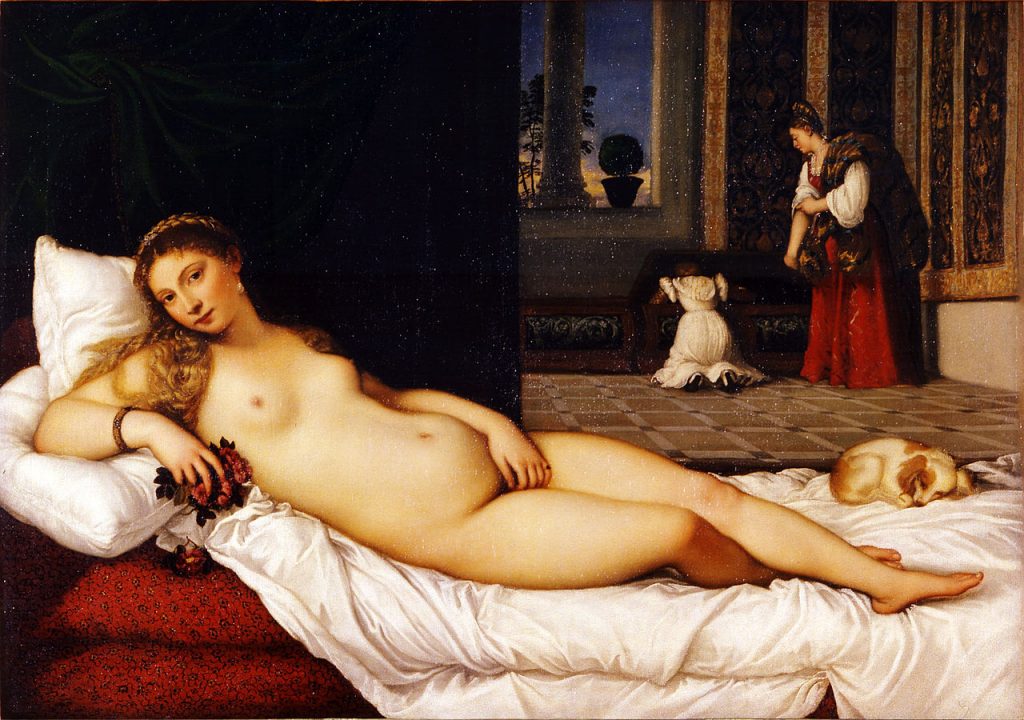
For Manet, however, although the image and composition in Olympia are doubtlessly identified as also alluding to Titian’s painting, such an intertextuality does not function to pay tribute to the canonized matrix in terms of both ideological connotations and visual representation. The most striking neutralization of the European aesthetic assumptions about the image of women is characterized by the abolishment of sex appeal supposedly conveyed (though rather implicitly and in the guise of mythological discourse in Titian) in the secular or even erotic depiction of female figures in Venetian Renaissance paintings. Ironically, Olympia, a courtesan living in the secular Parisian society, does not appear to be enticing to the viewer at all; the assumed sensual Venus-image is neutralized by her intelligently calm or even provocatively teasing gaze as well as her rather stiff and asexual posture (e.g., with her left hand symbolically blocking her genital).
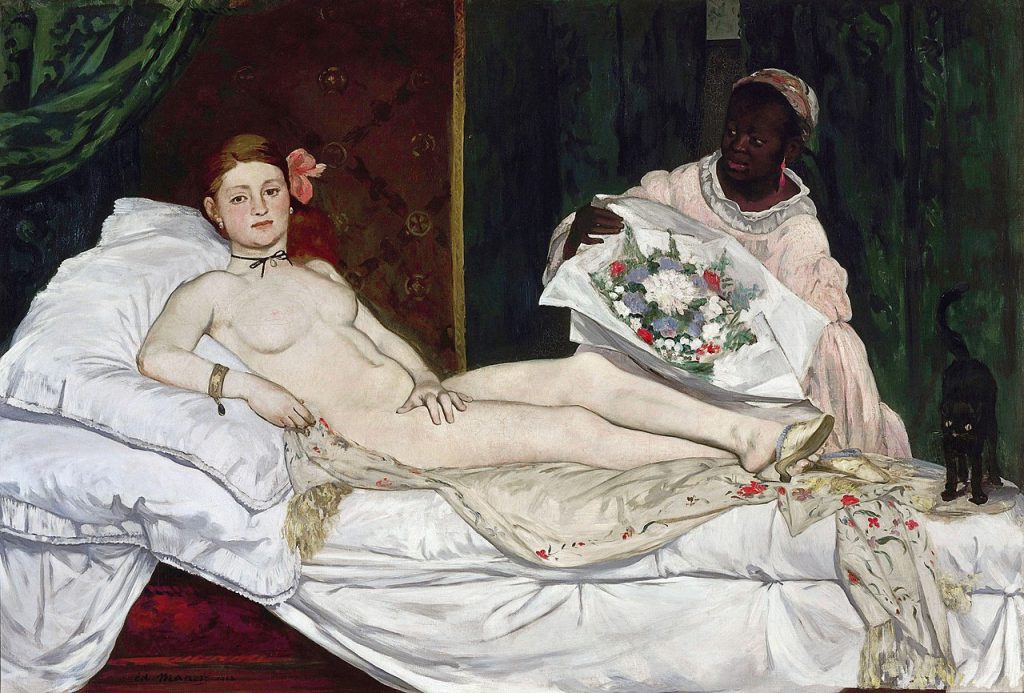
Also, even though Manet’s setting is almost identical with Titian’s in terms of composition and spatial arrangement, the idealized sexist scenario that a well-off beautiful mistress is always seductively expecting the master (as overflowing in Titian’s setting) is displaced by the more realistic life of a modern courtesan in her cramped apartment and her being attended to by a ‘negro’ servant (due to France’s imperialist colonization) who happens to be bringing a bouquet of flowers supposedly sent from an unwelcome client. John Berger’s following words properly address this point:
In modern art the category of the nude has become less important. Artists themselves began to question it. In this, as in many other respects, Manet represents a turning point. If one compares his Olympia with Titian’s original, one sees a woman, cast in the traditional role, beginning to question that role, somewhat defiantly. (Berger, 1972, p.57)
Hence, by alluding conspicuously and thoroughly to a discoursed female image, Manet’s painting as a cultural text shows intertextual neutralizations resulting in rejections against the definitive ideological connotations having been underlying the social status of women.
One of Manet’s direct successors in terms of being bound to further undermine a plastic mimesis in portraiture is Paul Cézanne (1839-1906) – among the other so-called Post-impressionists like Paul Gauguin (1848-1903) and Vincent van Gogh (1853-1890). While all three painters are similarly showing their own distinctive ways to avoid plastic representationalism (if not really yet to abandon it altogether), it is Cézanne who can be a more paradigmatic figure to show how the art of portraiture has transformed from a kind of photographic realism into a more expressive tool for the painter to actively register his own artistic ideal instead of recording the reality passively faithfully.
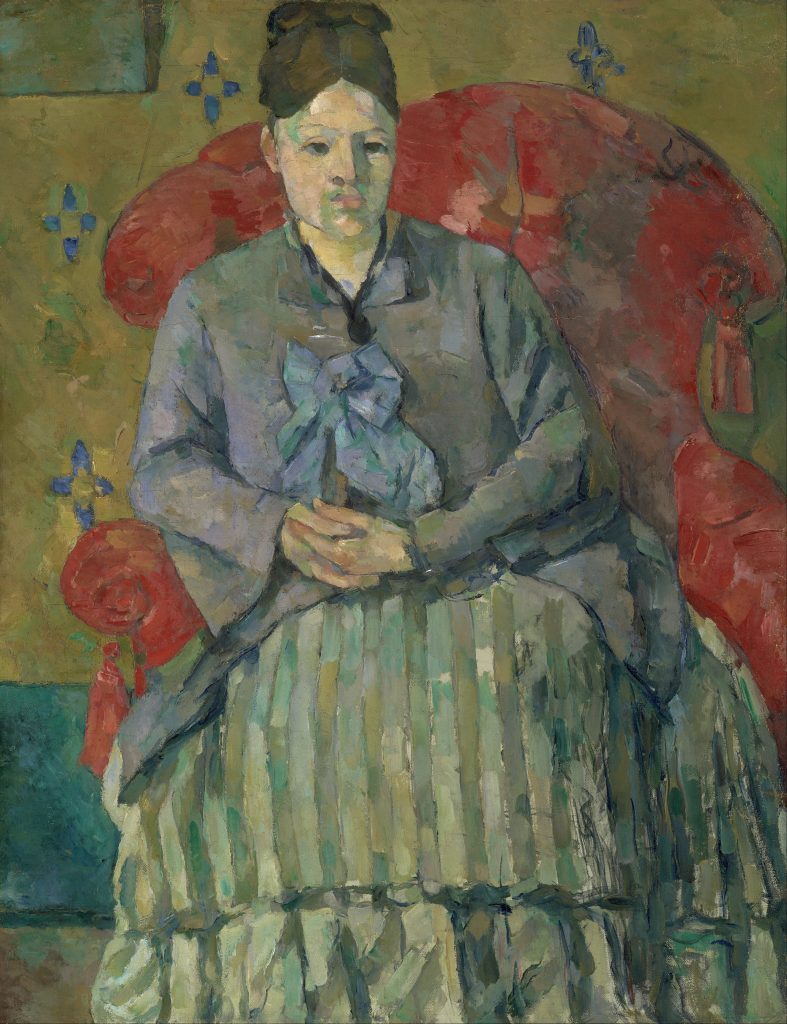
Above all, Cézanne painted a serious of portraits for his wife Hortense Fiquet3, which show us more about the painter’s own endeavors as to how to really present the portrait as a work of art than about how to record the sitter’s physical features as what a photograph at that time can handily suffice. As Lewis observes, ‘Cézanne’s portraits not only invite us into the world he knew; they also allow us to contemplate the artist at work’ (Lewis, 2018, p.7). Let’s focus on one of Cézanne’s portraits of Hortense titled Madame Cézanne in a Red Armchair (c. 1877). Although all features of Hortense’s face are supposed to be correctly portrayed and the basic modeling is done to (re)construct a somehow three-dimensional head, the effect of verisimilitude is minimal due to a deliberately unnatural handling of colour – embodying a typical trademark for the art of Post-impressionism – which is too subjective to be realistic to represent an objective reality.
In other words, Cézanne’s painting is even more non-representational than Manet’s, let alone Titian’s, in the sense that it does not at all tend to create an illusionistic three-dimensionality out of a two-dimensional surface. A portrait, hence, represents only the painter’s own subjective perception toward the external world rather than provides ideological significance to be surrounding the sitter.
Modern and Postmodern
Both Modern and Postmodern styles of painting are arguably still dominating the contemporary art scenes today. While having had a similarly unambiguous and unanimous attempt to interrogate the complacency of plastic representationalism, Postmodern art differs markedly from its immediate predecessor in terms of its characteristically unique approaches to toy with representational mimesis.
Such ‘passively aggressive’ approaches may look quite the opposite, with the Modernists allegedly obliterating a plastic illusionism which tends to make the viewers convinced that they are involved in a ‘real’ three-dimensional space, whereas the Postmodern artists pretentiously ‘including’ into their rebellious anti-representationalism some commonplace ‘faithfulness’ allusive to traditional ways of representationalism. Again, the art of portraiture being the subject of this essay is a very paradigmatic genre where there are many specimens demonstrating these two similar-but-different (or vice versa) approaches. We shall start with Modern portraiture.
It’s a bit awkward to still preserve the name of this conventional genre, i.e. portraiture, in discussing the styles that tend to radically deny such conventions altogether. There should never be a very exact moment at which such denials were first seen, but the French Fauvist movement initiated by Henri Matisse (1869-1954) – alongside André Derain (1880-1954), Maurice de Vlaminck (1876-1958) – is often deemed to be the start of Modernism. However, since the portraiture (and his art as a whole) of Matisse can somehow be seen (judgmentally of course, though acceptably enough) as more or less a direct successor of that of Cézanne and Gauguin, the first Modern portrait painters would have to be Pablo Picasso (1881-1973), Georges Braque (1882-1963), and Marcel Duchamp (1887-1968) who exercise a radically revolutionary ‘method’ in portrait painting – knowns as Cubism.
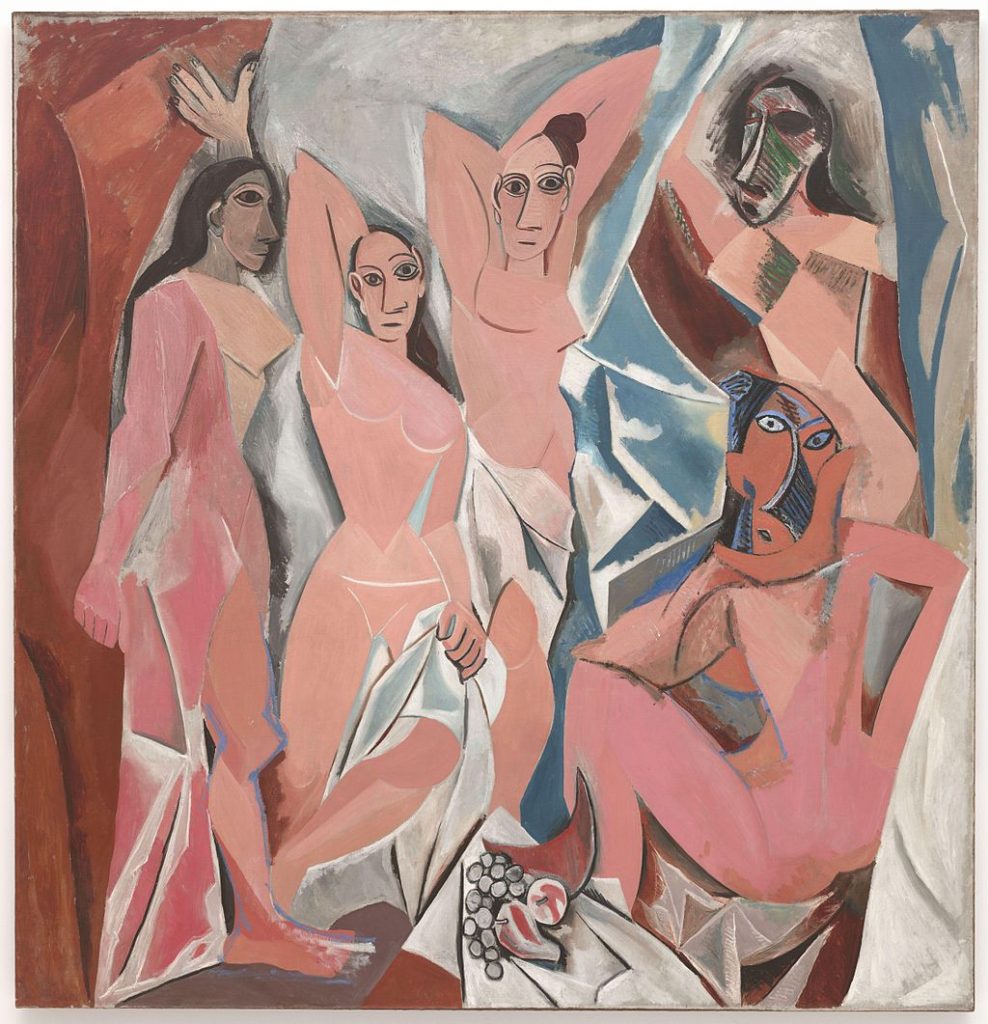
Refraining from ‘defining’ this always readily and happily ‘definable’ style by means of revealing its connotative meaning (whose possibility I doubt), I might better only highlight some of its denotative features when presenting Cubist portraits. Among many other such paintings by the three just mentioned, I focus on Picasso’s Les Demoiselles d’Avignon (1907) and Duchamp’s Nude Descending a Staircase No. 2 (1912).
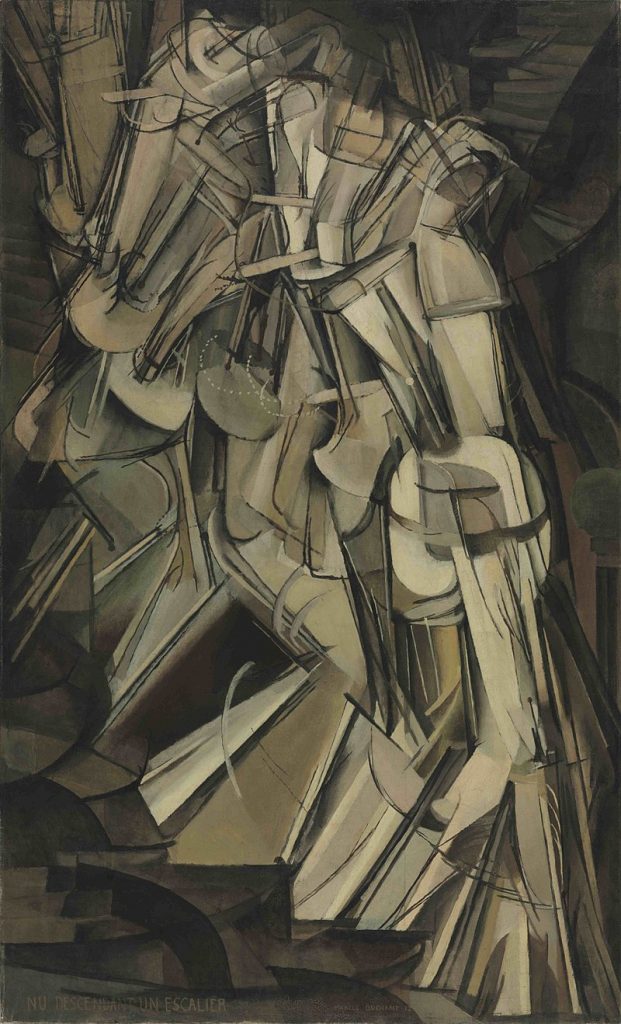
Ever since the Impressionists, the portrayal of the image of women had constantly been transformed from a marked sexism which serves somehow to satisfy male beholders’ sexual fantasy (as in Titian’s Venus of Urbino) through a moralistically justified submissiveness (as the female family members appearing in Jacques-Louis David’s Oath of the Horatti) to an asexual challenge against male gaze (as in Manet’s Olympia).
But it was not until the Modernist depictions of women that the presupposed and naturalized representations of the female image have been radically neutralized – if not entirely abolished. Both Picasso’s Les Demoiselles d’Avignon and Duchamp’s Nude Descending a Staircase No. 2 show such a neutralization, while the respective witty (viz. ‘naughty’) ways in which the two artists’ rebellious attempts to manipulate the (sexist) viewer is not exactly the same. To draw on Michel Foucault’s assessments of Modern painting, especially his commentary on the Belgian surrealist painter René Magritte (1898-1967), both Picasso’s and Duchamp’s paintings can be seen as non-affirmative, that is, anti-representational, paintings.
For example, whenever we see a classical painting depicting a naked young man and a naked young woman standing side-by-side, we may immediately recognize its representative bond, that is, Adam and Eve being about to taste the forbidden fruit resulting in the ‘original sin’ of mankind. In other words, the representational image and its semantic meaning is forever inter-connected without having to rely on any linguistic tools. Such semantic meanings are culturally rooted in our (un)conscious mind making us to come up with instant reaction to any representational images and virtually say ‘what I see is that…’ to ourselves. However, it would be difficult for anyone to come up with ‘what I see is that…’ when viewing my equally ‘representational’ painting parodying (Duchamp’s parody of) Cranach’s classic; instead, one might probably only say ‘what I see is…what?!’ to oneself. Hence, what Foucault calls the second principle having governed classical art is disturbed in my painting Leaving a Trace (1992).
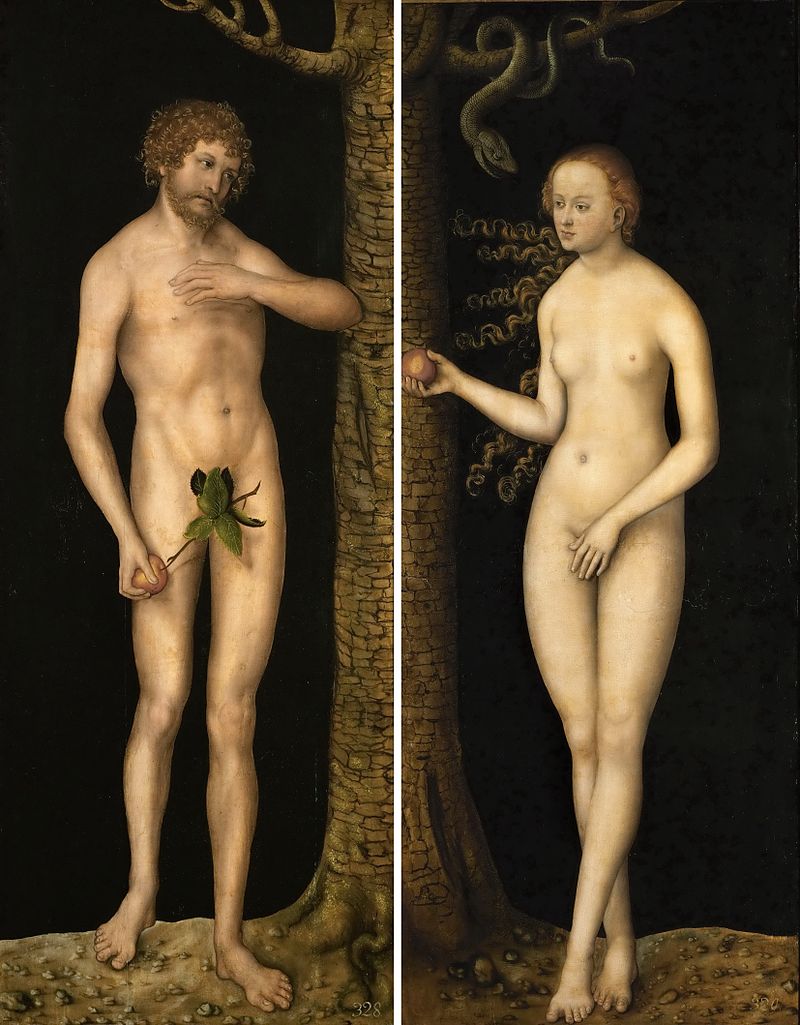
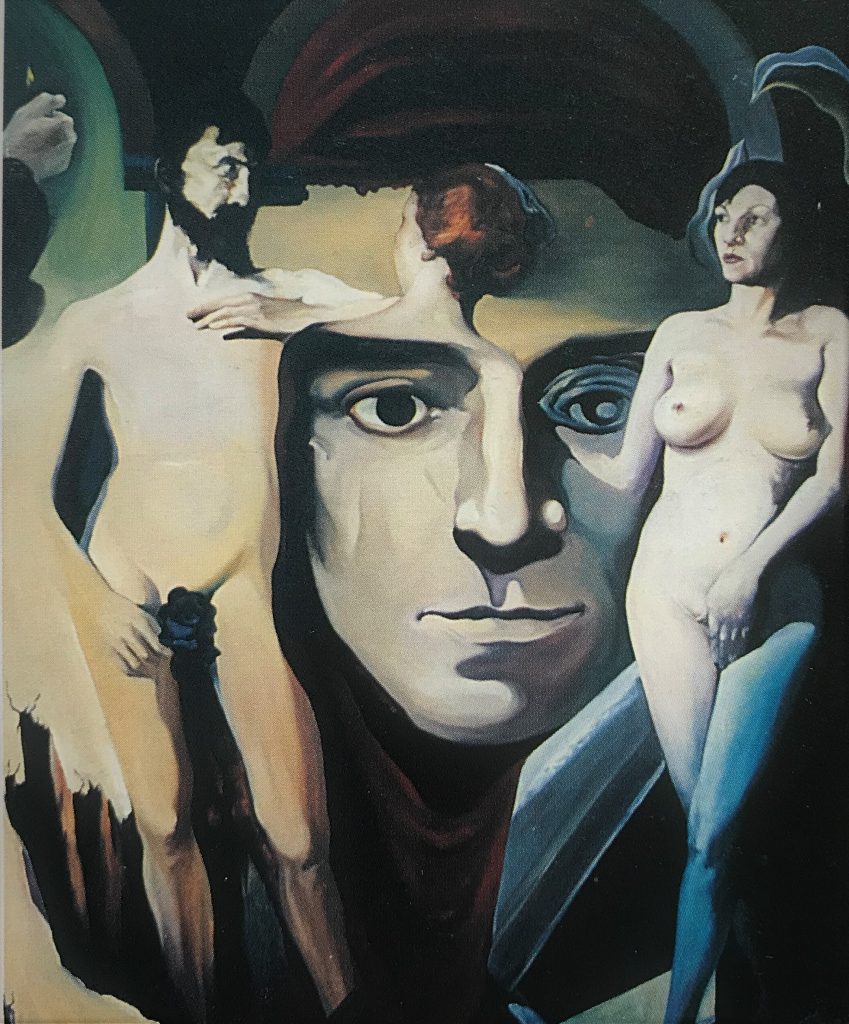
Source: Philippe Charriol Foundation
Now, let’s return to the Picassoesque classic. Like the heroine in Manet’s Olympia, the five female figures (though whose sex is almost barely identified) in Les Demoiselles are also prostitutes (from the Brothel of Avignon in Barcelona). While in Manet the much-diminished sex appeal results from Olympia’s provocative gaze along with her asexual body posture (which is somehow representationally depicted), the female figures in Picasso are torn into non-representational coloured surfaces which ‘represent’ nothing except the faces of the women (which look even much more asexually provocative than Manet’s Olympia) and some messily intersecting geometric facets and cubes (known therefore as Facet Cubism). Due to this broken resemblance of the ‘image’ of a group of prostitutes, the supposed representative bond, i.e. ‘Look at them: they are naked young girls!’, would not possibly work anymore.
Compared to Picasso’s Les Demoiselles, Duchamp’s Nude Descending a Staircase No. 2 abolishes more radically the plastic resemblance governing representational images. The beholder can neither identify the ‘nude’ nor detect any action taken by her/him. What the viewer can see is not the representation of any culturally identifiable images but only intersections of messy lines and facets. The Foucauldian second principle is hence immediately and intrinsically undermined. But compared to Picasso, Duchamp seems to be much ‘playful’ and more ruthlessly mocking by toying with the representative bond. While we can still see ‘girls’ from a brothel in Picasso corresponding to his title which is rather neutrally descriptive, the much more deliberately expressive title of Duchamp’s painting is apparently intended as a ruse to confuse, if not exactly to ‘punish’, a beholder who is accustomed to the supposed representative bond and is hence preoccupied by the supposed sexual fantasy or voyeurism; although the title is not exactly included into the painting, the beholder will be inevitably driven and misled by it throughout his viewing.
Duchamp, in this regard, is similar to what Magritte does in Ceci n’est pas une pipe (This is not a pipe) (1929) where the linguistic note tends to create a constant negation (or simply a confusion or a triviality) against the conspicuous representation of the pipe.

Whereas in Magritte we can observe that the incorporation of language into representation results in the former negating the latter, in Duchamp it is the visual image that embarrasses the linguistic title. By making the title constantly interfere the painting, Duchamp can be deemed to have also broken the Foucauldian first principle by means of the inclusion of linguistic reference into painting. But this inclusion, like the case of Magritte, does not supplement the ‘representation’ (if any) but entraps those who are used to it and complacently enjoying it.
Modernist portraiture after the Cubists had indeed produced a great variety of paradigms all tending to annoy representationalism. They are similarly interesting while also somehow unanimously ‘imprisoned’ into the attempt to openly – therefore inevitably self-righteously – undermine classical representationality, or the so-called two Foucauldian principles.
However, due to the limited scope and length of this article, we shall directly enter the art of portraiture after Modernism – having considered to refrain from using the term ‘Postmodern’ for obvious reasons. I shall focus on two ‘portrait’ artists who had/have had a very active and long span of artist life for more than half of a century: Lucian Freud (1922-2011) and Cindy Sherman (1954-) who, as it were, are boycotting, similarly-but-differently, the parasitic ideological complacencies brought by the sumptuously canonized representationalism.
Although Freud’s painting styles had undergone some radical changes throughout his career from showing a rather decorative feature towards a more and more realistic outlook, he is doubtlessly a figurative artist through and through presenting an obvious representationality. However, ‘representation’ in him does seldom serve the purpose of asserting any political correctness, e.g., beauty, nobility, harmony, etc. – as conventional representational art does. For example, a conventional representational portrait must present desirable qualities or moral righteousness possessed by the sitter whom, in short, must be beautified either physically or ideologically; what is represented must be ideologically sound.
But with Freud, the sitters always look ‘ugly’; he is capable, like his abstract-expressionist friend Francis Bacon, of always finding/creating ‘unpleasant’ human figures and faces – as the title of a newish volume of his, ‘Monumental’, wittily suggests.
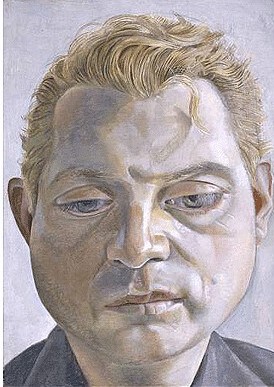
Source: The Telegraph
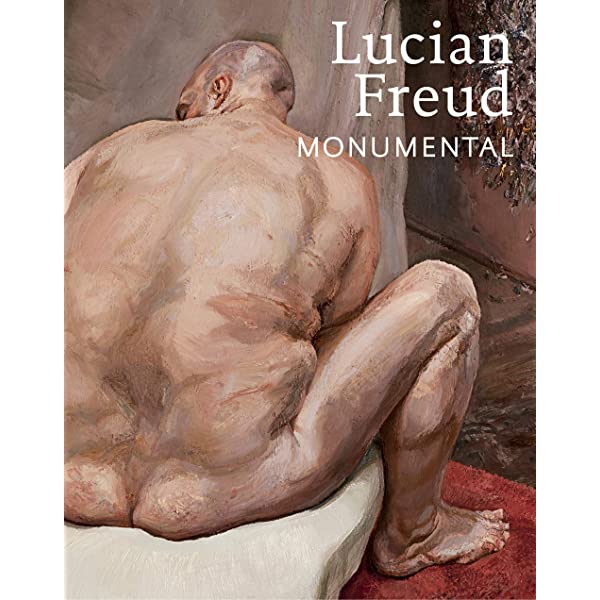
A telling example is being his portrayal of the late Queen Elizabeth II. Rightly crowned with her luxurious ‘Diamond Diadem’, her majesty is not furnished nor garnished with any expected grace as often seen in usual portrait paintings depicting her.
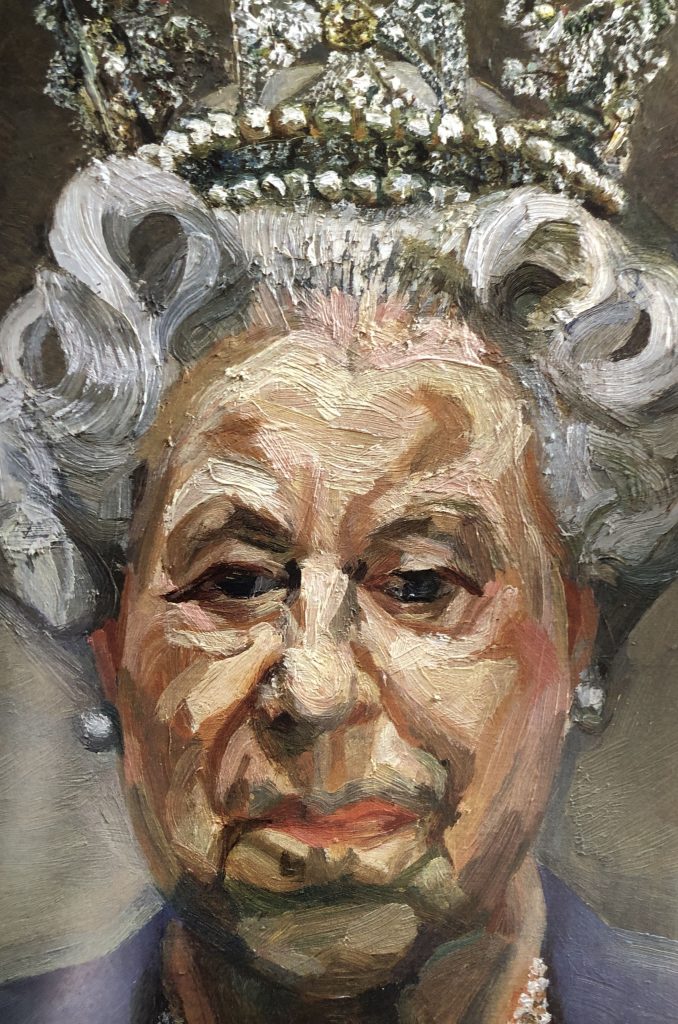
Source: Arthive website
The point is that Freud does not tend to distort the representation of her face as well as her jewelled crown which are depicted rather realistically. But such a realist representation can hardly be seen as ideologically representational enough to glorify her reign at all: ‘This is not a glamorous image but it feels real and earthy, almost as though Freud peeled away the layers of deportment that come so naturally to a monarch and painted the person underneath’ (Scott, 2010, p.185).
As for Cindy Sherman, strictly speaking, she is not a portrait painter but a (self-)portrait photographer who only photographs herself as her many ‘sitters’ – but who cares about the distinction today? – above all, National Portrait Gallery (London) presented a major survey exhibition of her work (all photographic prints) in 2020.

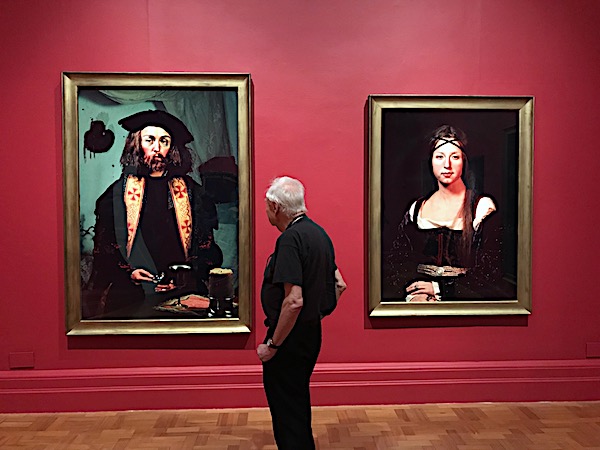
While it would be painstakingly hard to generalize her more than two hundred such photographic portraits simulating almost the same number of different simulacra ‘identities’, I am inclined to follow Hal Foster’s ‘Lacanian’ categorization of her work into three chronological phases: 1975-82, 1987-90, and after 1991, corresponding to the three positions of the Lacanian gaze (subject-as-picture, image-screen, and object-gaze).
But, refraining from being psychoanalytic here – though a pity, I rather trace Sherman’s interestingly keen responses to a splendid array of aesthetic and cultural canons on a seemingly very limited exhibition platform consisting of only three core elements, i.e. photography-the-medium, Sherman-the-artist 1 (being the photographer), and Sherman-the-artist 2 (being the sitter/model).
Here I would like to discuss two distinctive series of such portraiture in Sherman’s substantial self-portrait oeuvre. In 1970s-1980s, she simulated (rather not in the manner of parody, not yet) film stills and centrefolds in the manner of a deliberate simulacral repetition – kind of echoing Warhol’s simulacrum silk-screens such as his Marylin Diptych (1962). Her untitled film sills simulate close-up portrait scenes from renowned directors’ black-and-white classics, such as those by Hitchcock, Godard, and Antonioni – ‘but in each case no exact match will be found’ (Balsom, 2019, p.60), pretending in the manner of paying tribute to the masters while immediately turning the latter into Baudrillardian simulacra, that is, instances of clichés.
For example, Marion Crane’s dramatic changing lingerie sequence in Hitchcock’s Psycho (1960) is repeated and condensed into one film still in her Untitled Film Still #6 (1977), with herself dressed in a set of black-top and white-panty two-piece lingerie seemingly neutralizing the Hitchcock ideological white-and-black or innocence-and-evil symbolism hinting at Marion’s before-and-after stealing that $40,000. In short, the superficial effect of the portrait seems to come up with a resemblance of a classic (origin) but underneath it there are only a series of similitudes not alluding to any ideological significance (originality).
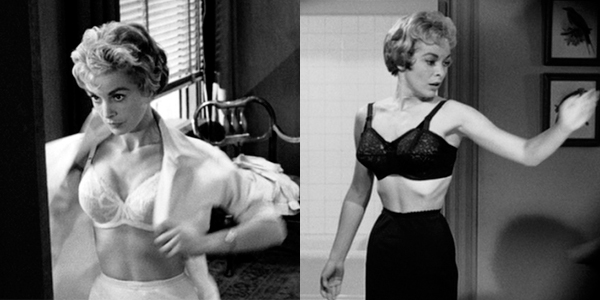
Source: WhatCulture.com
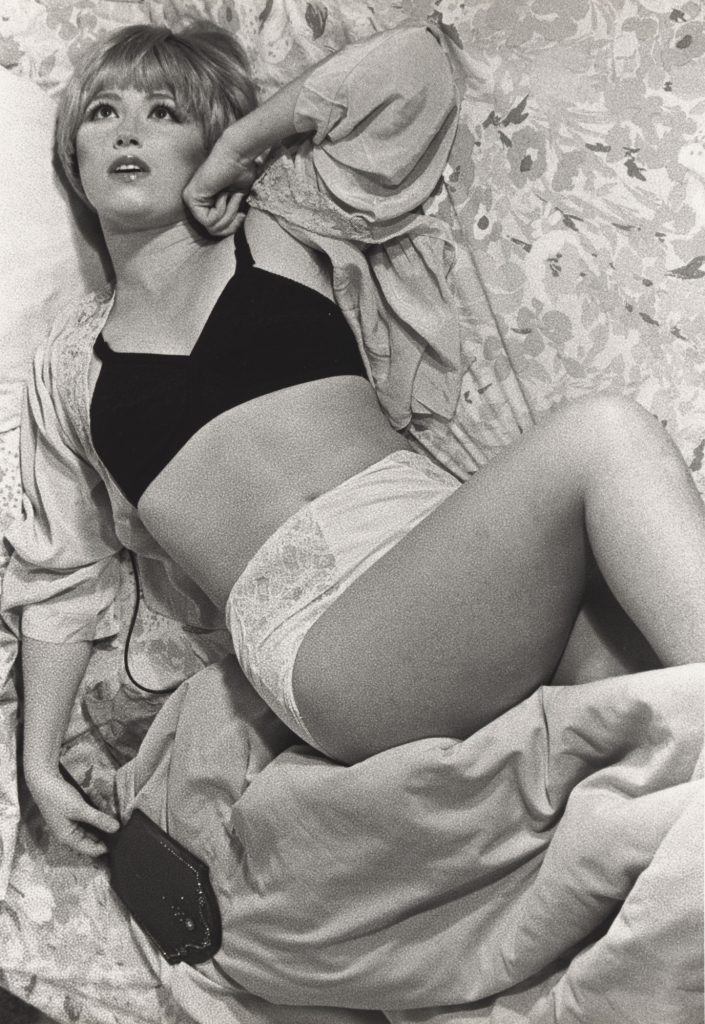
Source: MoMA Website
The second ‘product line’ (in view of the obsessively sequential consistency of her productions) features Sherman’s ruthless parodies of classical portraiture – further toying with representational resemblance in a more radically mocking manner. Each of such parodies cites a famous canonical painting by artists such as Leonardo, Raphael, Caravaggio, and Ingres – all acclaimed portrait painters in the history of Western art.



Every instance of the intertextuality – which consists of a variety of elements individually alluding to many aesthetic and cultural matrixes – turns out always to be a mutual neutralization of their original meanings: such elements include hyperbolically flabbergasted body, flamboyantly pretentious clothes, doubtlessly fake props, and even the vulgarly luxurious (and apparently very cheap) picture frames.
While Freud seems to be obsessed with articulating a figurative ugliness in his ‘representational’ portraiture, Sherman’s physically tangible realism presents nothing but shocking grotesqueness which de-idealizes the divine halo floating on those sacred names having long been the representation of artistic civilization. To quote Foster (1996), Sherman’s ‘deidealization is pushed to the point of desublimation… these bodies break down the upright lines of proper representation, indeed of proper subjecthood’ (p.148).
Postscript
Compared to other subject matters, portraiture has been occupying a unique position in the history (and the future) of art doubtlessly because it reflects human’s concern about subjectivity thus constantly struggling in between the Lacanian imaginary and symbolic order. Many (humanist) art and cultural critics, including those mentioned in this article such as John Berger, seem to be worried (at least unconsciously reflectively) about the horrendous rapid changes in art (and culture and society as a whole).
Although I am a traditionally trained painter (implying that plastic representationalism has always been an unshakable doctrine in me), I also regard myself as a Hegelian in the sense of believing in the unavoidable dialectic evolution towards another synthesis. I hence recall the title of a rather huge monograph by Peter Watson on 20th-century culture and humanities that I’d had a glance at some years ago, quoting W. B. Yeats, whose original lines read:
All changed, changed utterly:
A terrible beauty is born.





